#but ranking which is more racist than the other is nonsensical
Explore tagged Tumblr posts
Note
I don't know if your post about racism was also about world cup and if people should support Argentina or not but argertines racism is truly the worst, if wasn't for that they would have their biggest rival supporting them in this final
No offence, but that’s just such an odd way of thinking.
As a Black Muslim woman, there’s no such thing as better or worst type of racism. Racism is racism, all forms of it are bad to me.
So it’s just strange that now people are trying to make it seem like there’s a ranking for which country’s racism is worst than the other. That just doesn’t make any sense and it’s also completely useless if you want to fight against racism.
And furthermore, many football fans are inherently racist - we know that. Deciding which teams you are going to support by whether a country’s fan base is racist is a losing battle - you can find racist fans for ANY country.
#maybe it’s because in some racist and islamophobic countries they have players who are Muslim or have familial origins in other places -#that it tricks you into thinking those countries are better than others#like France Germany and England have disgusting racism despite most of their players having diverse backgrounds#even the lovely Morocco that we’ve been supporting - like all North African nations - its normal to refer to Black people as slaves/servants#and even Brazil……Do not get me started in Brazil#to conclude what I’m trying to say is - if you focus on things like racism in football - you could find problems with every club/nation#but ranking which is more racist than the other is nonsensical
9 notes
·
View notes
Text
[emphasis mine]
“The decolonization narrative has dehumanized Israelis to the extent that otherwise rational people excuse, deny, or support barbarity. It holds that Israel is an “imperialist-colonialist” force, that Israelis are “settler-colonialists,” and that Palestinians have a right to eliminate their oppressors. (On October 7, we all learned what that meant.) It casts Israelis as “white” or “white-adjacent” and Palestinians as “people of color.”
This ideology, powerful in the academy but long overdue for serious challenge, is a toxic, historically nonsensical mix of Marxist theory, Soviet propaganda, and traditional anti-Semitism from the Middle Ages and the 19th century. But its current engine is the new identity analysis, which sees history through a concept of race that derives from the American experience. The argument is that it is almost impossible for the “oppressed” to be themselves racist, just as it is impossible for an “oppressor” to be the subject of racism. Jews therefore cannot suffer racism, because they are regarded as “white” and “privileged”; although they cannot be victims, they can and do exploit other, less privileged people, in the West through the sins of “exploitative capitalism” and in the Middle East through “colonialism.”
This leftist analysis, with its hierarchy of oppressed identities—and intimidating jargon, a clue to its lack of factual rigor—has in many parts of the academy and media replaced traditional universalist leftist values, including internationalist standards of decency and respect for human life and the safety of innocent civilians. When this clumsy analysis collides with the realities of the Middle East, it loses all touch with historical facts.
Indeed, it requires an astonishing leap of ahistorical delusion to disregard the record of anti-Jewish racism over the two millennia since the fall of the Judean Temple in 70 C.E. After all, the October 7 massacre ranks with the medieval mass killings of Jews in Christian and Islamic societies, the Khmelnytsky massacres of 1640s Ukraine, Russian pogroms from 1881 to 1920—and the Holocaust. Even the Holocaust is now sometimes misconstrued—as the actor Whoopi Goldberg notoriously did—as being “not about race,” an approach as ignorant as it is repulsive.
Contrary to the decolonizing narrative, Gaza is not technically occupied by Israel—not in the usual sense of soldiers on the ground. Israel evacuated the Strip in 2005, removing its settlements. In 2007, Hamas seized power, killing its Fatah rivals in a short civil war. Hamas set up a one-party state that crushes Palestinian opposition within its territory, bans same-sex relationships, represses women, and openly espouses the killing of all Jews.
Very strange company for leftists.
Of course, some protesters chanting “from the river to the sea” may have no idea what they’re calling for; they are ignorant and believe that they are simply endorsing “freedom.”
[…]
I should also say that Israeli rule of the Occupied Territories of the West Bank is different and, to my mind, unacceptable, unsustainable, and unjust. Settlers under the disgraceful Netanyahu government have harassed and persecuted Palestinians in the West Bank: 146 Palestinians in the West Bank and East Jerusalem were killed in 2022 and at least 153 in 2023 before the Hamas attack, and more than 90 since. Again: This is appalling and unacceptable, but not genocide. The Palestinians in the West Bank have endured a harsh, unjust, and oppressive occupation since 1967.
Although there is a strong instinct to make this a Holocaust-mirroring “genocide,” it is not: The Palestinians suffer from many things, including military occupation; settler intimidation and violence; corrupt Palestinian political leadership; callous neglect by their brethren in more than 20 Arab states; the rejection by Yasser Arafat, the late Palestinian leader, of compromise plans that would have seen the creation of an independent Palestinian state; and so on. None of this constitutes genocide, or anything like genocide. The Israeli goal in Gaza—for practical reasons, among others—is to minimize the number of Palestinian civilians killed. Hamas and like-minded organizations have made it abundantly clear over the years that maximizing the number of Palestinian casualties is in their strategic interest. (Put aside all of this and consider: The world Jewish population is still smaller than it was in 1939, because of the damage done by the Nazis. The Palestinian population has grown, and continues to grow, at a substantial and healthy rate. Demographic shrinkage is one obvious marker of genocide. In total, roughly 120,000 Arabs and Jews have been killed in the conflict over Palestine and Israel since 1860. By contrast, at least 500,000 people, mainly civilians, have been killed in the Syrian civil war since it began in 2011.)
If the ideology of decolonization, taught in our universities as a theory of history and shouted in our streets as self-evidently righteous, badly misconstrues the present reality, does it reflect the history of Israel as it claims to do? It does not. Indeed, it does not accurately describe either the foundation of Israel or the tragedy of the Palestinians.
According to the decolonizers, Israel is and always has been an illegitimate freak-state because it was fostered by the British empire and because some of its founders were European-born Jews.
In this narrative, Israel is tainted by imperial Britain’s broken promise to deliver Arab independence, and its kept promise to support a “national home for the Jewish people,” in the language of the 1917 Balfour Declaration. But the supposed promise to Arabs was in fact an ambiguous 1915 agreement with Sharif Hussein of Mecca, who wanted his Hashemite family to rule the entire region. In part, he did not receive this new empire because his family had much less regional support than he claimed. Nonetheless, ultimately Britain delivered three kingdoms—Iraq, Jordan, and Hejaz—to the family.
The imperial powers—Britain and France—made all sorts of promises to different peoples, and then put their own interests first. Those promises to the Jews and the Arabs during World War I were typical. Afterward, similar promises were made to the Kurds, the Armenians, and others, none of which came to fruition. But the central narrative that Britain betrayed the Arab promise and backed the Jewish one is incomplete. In the 1930s, Britain turned against Zionism, and from 1937 to 1939 moved toward an Arab state with no Jewish one at all. It was an armed Jewish revolt, from 1945 to 1948 against imperial Britain, that delivered the state.
Israel exists thanks to this revolt, and to international law and cooperation, something leftists once believed in. The idea of a Jewish “homeland” was proposed in three declarations by Britain (signed by Balfour), France, and the United States, then promulgated in a July 1922 resolution by the League of Nations that created the British “mandates” over Palestine and Iraq that matched French “mandates” over Syria and Lebanon. In 1947, the United Nations devised the partition of the British mandate of Palestine into two states, Arab and Jewish.
[…]
The concept of “partition” is, in the decolonization narrative, regarded as a wicked imperial trick. But it was entirely normal in the creation of 20th-century nation-states, which were typically fashioned out of fallen empires. And sadly, the creation of nation-states was frequently marked by population swaps, huge refugee migrations, ethnic violence, and full-scale wars. Think of the Greco-Turkish war of 1921–22 or the partition of India in 1947. In this sense, Israel-Palestine was typical.
At the heart of decolonization ideology is the categorization of all Israelis, historic and present, as “colonists.” This is simply wrong. Most Israelis are descended from people who migrated to the Holy Land from 1881 to 1949. They were not completely new to the region. The Jewish people ruled Judean kingdoms and prayed in the Jerusalem Temple for a thousand years, then were ever present there in smaller numbers for the next 2,000 years. In other words, Jews are indigenous in the Holy Land, and if one believes in the return of exiled people to their homeland, then the return of the Jews is exactly that. Even those who deny this history or regard it as irrelevant to modern times must acknowledge that Israel is now the home and only home of 9 million Israelis who have lived there for four, five, six generations.
Most migrants to, say, the United Kingdom or the United States are regarded as British or American within a lifetime. Politics in both countries is filled with prominent leaders—Suella Braverman and David Lammy, Kamala Harris and Nikki Haley—whose parents or grandparents migrated from India, West Africa, or South America. No one would describe them as “settlers.” Yet Israeli families resident in Israel for a century are designated as “settler-colonists” ripe for murder and mutilation. And contrary to Hamas apologists, the ethnicity of perpetrators or victims never justifies atrocities. They would be atrocious anywhere, committed by anyone with any history. It is dismaying that it is often self-declared “anti-racists” who are now advocating exactly this murder by ethnicity.
[…]
The open world of liberal democracies—or the West, as it used to be called—is today polarized by paralyzed politics, petty but vicious cultural feuds about identity and gender, and guilt about historical successes and sins, a guilt that is bizarrely atoned for by showing sympathy for, even attraction to, enemies of our democratic values. In this scenario, Western democracies are always bad actors, hypocritical and neo-imperialist, while foreign autocracies or terror sects such as Hamas are enemies of imperialism and therefore sincere forces for good. In this topsy-turvy scenario, Israel is a living metaphor and penance for the sins of the West. The result is the intense scrutiny of Israel and the way it is judged, using standards rarely attained by any nation at war, including the United States.
But the decolonizing narrative is much worse than a study in double standards; it dehumanizes an entire nation and excuses, even celebrates, the murder of innocent civilians. As these past two weeks have shown, decolonization is now the authorized version of history in many of our schools and supposedly humanitarian institutions, and among artists and intellectuals. It is presented as history, but it is actually a caricature, zombie history with its arsenal of jargon—the sign of a coercive ideology, as Foucault argued—and its authoritarian narrative of villains and victims. And it only stands up in a landscape in which much of the real history is suppressed and in which all Western democracies are bad-faith actors. Although it lacks the sophistication of Marxist dialectic, its self-righteous moral certainty imposes a moral framework on a complex, intractable situation, which some may find consoling. Whenever you read a book or an article and it uses the phrase “settler-colonialist,” you are dealing with ideological polemic, not history.
[…]
The Israel-Palestine conflict is desperately difficult to solve, and decolonization rhetoric makes even less likely the negotiated compromise that is the only way out.
Since its founding in 1987, Hamas has used the murder of civilians to spoil any chance of a two-state solution. In 1993, its suicide bombings of Israeli civilians were designed to destroy the two-state Olso Accords that recognized Israel and Palestine. This month, the Hamas terrorists unleashed their slaughter in part to undermine a peace with Saudi Arabia that would have improved Palestinian politics and standard of life, and reinvigorated Hamas’s sclerotic rival, the Palestinian Authority. In part, they served Iran to prevent the empowering of Saudi Arabia, and their atrocities were of course a spectacular trap to provoke Israeli overreaction. They are most probably getting their wish, but to do this they are cynically exploiting innocent Palestinian people as a sacrifice to political means, a second crime against civilians. In the same way, the decolonization ideology, with its denial of Israel’s right to exist and its people’s right to live safely, makes a Palestinian state less likely if not impossible.
The problem in our countries is easier to fix: Civic society and the shocked majority should now assert themselves. The radical follies of students should not alarm us overmuch; students are always thrilled by revolutionary extremes. But the indecent celebrations in London, Paris, and New York City, and the clear reluctance among leaders at major universities to condemn the killings, have exposed the cost of neglecting this issue and letting “decolonisation” colonize our academy.”
Simon Sebag Montefiore is the author of Jerusalem: The Biography and most recently The World: A Family History of Humanity.
84 notes
·
View notes
Text
Ranking the Dark Council:
hi! I was writing some notes for a piece of SWTOR fiction I am working on, and decided to create this list as a fun way to share that information.
Dark Council Pre-Shadow of Revan:
12. Darth Aruk - we know nothing about this character, other than that they were head of the Sphere of Sith Philosophy. According to the Wiki, rooting out Revanites was supposed to be their job. What a failure, hopefully they still have a job after Shadow of Revan?
11. Darth Rictus - Also kind of a mystery, which is ironic since he was head of the Sphere of Mysteries. Rictus does appear in a novel called 'Annihilation', but that book is mostly about Theron Shan. All we really know about Rictus is that he's (A) old, (B) dislikes aliens, unless they're murderous enough, and (C) founded the Dread Executioners to take down the Dread Masters. Not enough information to rank any higher.
10. Darth Acharon - at least this guy appears in the game. He's kind of a nothing character though. He defended the imperial occupation of Corellia unsuccessfully. He was head of the Sphere of Biotics. Since he died on Corellia, he would presumably have been replaced by Shadow of Revan, but we don't know who by.
9. Darth Arkous - hate this guy, but he's still technically head of the Sphere of Military Offense after the Hutt Cartel plotline. God, what a bag of dicks he is though. The one good thing about this character is that he's technically Lana Beniko's master? Although she's an advisor rather than an apprentice, so he gets no credit for the existence of awesome Sith wife.
8. Darth Decimus - Also found in game on Corellia! Decimus is actually present in the imperial quests, so you get a lot more interaction with him than Acharon. Canonically, he also trained Krovos! Krovos is really cool, so decimus should get a few points by association. Not enough to bump him up the list though. For the head of Military Strategy, he's not a very good commander.
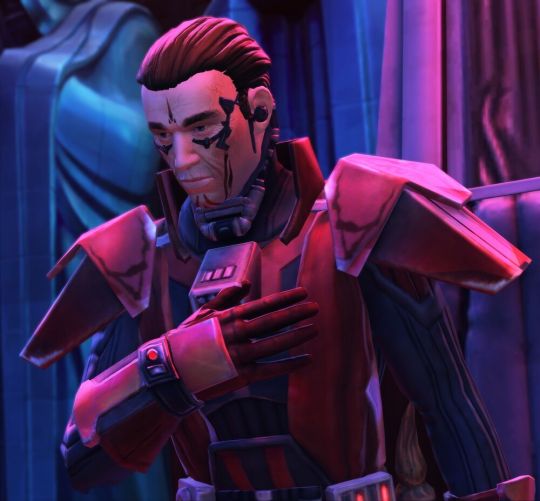
7. Darth Ravage - You can meet Ravage at the end of the Inquisitor and Warrior storylines, and for all imperials he is present during the cutscenes preceding the Emperor Malgus flashpoints (although does nothing to help?). The main reason I'm putting Ravage so low is that he's a little bit inconsistently written. He'll gladly say "good riddance" to Darth Thanaton's death in the inquisitor plotline, but if you kill Baras in the Warrior plotline, he'll show up at Nathema and be all offended that you claimed power by murdering your master... does he know what a Sith is?
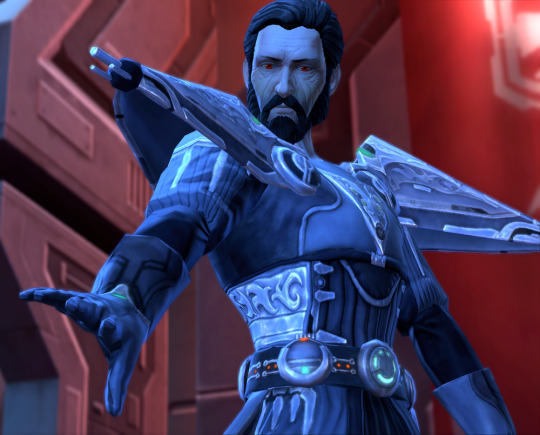
6. Darth Mortis - I have a bit of a soft spot for Mortis. He's got a no-nonsense demeanour which is rare amongst Sith, and he's clearly serious enough about their philosophy to join a secret conspiracy against the alliance if you "squander" the power of the Eternal Throne - a petty move, this man is a bitch after my own heart. He also is the one who snaps Darth Thanaton's silly little neck, which definitely earns him a few points in my eyes. As a point, he's involved in the Macrobinocular missions, which I did not enjoy, but he was a highlight of the questline.
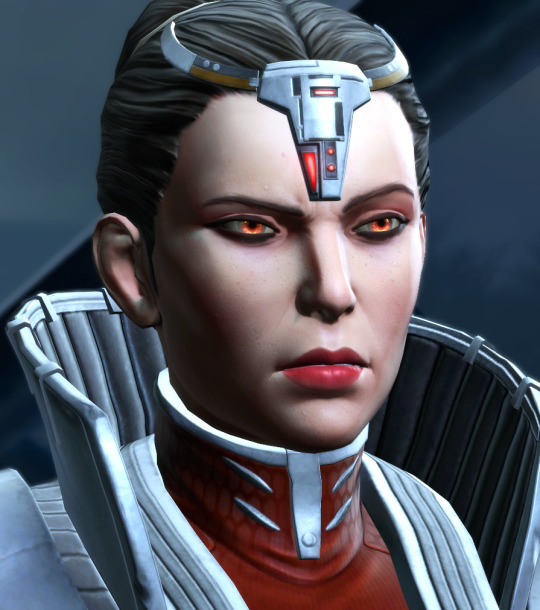
5. Darth Acina - WOMEN IN POWER!!! Empress Acina is better than Emperor Vitiate. Unfortunately Acina is kind of bland, I really don't feel strongly about her either way. I've killed her on Iokath in most of my playthroughs, even if I don't intend to defect to the republic later. I might be lesbian but I just don't like her that much. Her reforms to the Empire are interesting though, I do have to give her credit for making the Empire slightly less racist and Sith dominated.
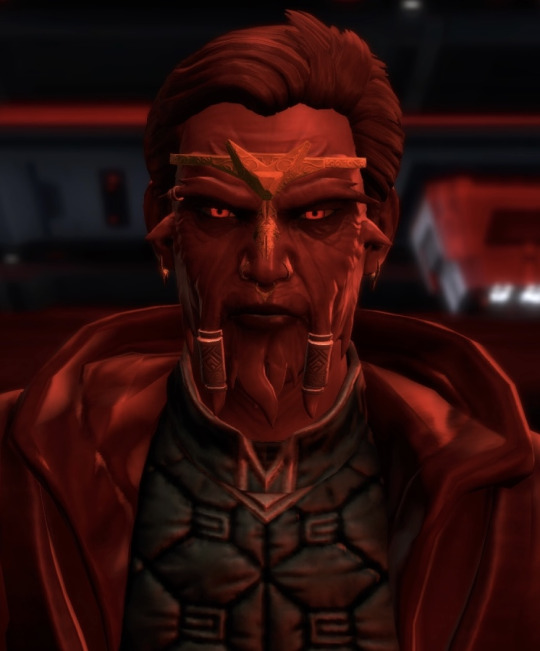
4. Darth Vowrawn - Silly guy!! This man is genuinely quite funny. He's a blast to spend time with at the end of the Warrior story, after dealing with Baras' grumpy ass for close to fifty levels. His choice to help the Wrath with the Hand on Rishi says... something. He's genuinely an interesting character to me, especially since he maintains that joviality when he becomes Emperor. It's tempered, to be sure, but I think it does show it wasn't entirely an act. Vowrawn could be a genuine friend to the Wrath.
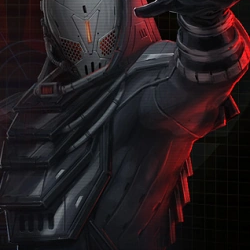
3. Darth Jadus - Sue me, I like unapologetically evil characters. Jadus is not just an evil clown, he's an evil circus. Schemer to the core and melodramatic as fuck. I chose to serve him without a second thought in my agent playthrough. I appreciated the name drop on Iokath and I have 1% chance 99% cope that he will return at some point in the story.
2. Darth Occlus/Nox/Imperius - OCs are fun. No further notes. I should probably drop the lore for my verison of this character, huh... maybe in another post.
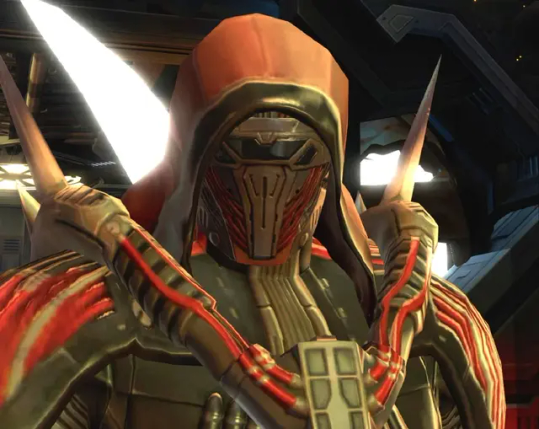
Darth Marr - Everyone's favourite tired Dad just trying to keep his society from collapsing as his colleagues bicker about inane bullshit. I reckon he drinks coffee straight outta the pot in the Dark Council's break room. I really wish he hadn't died, but his force ghost shenanigans were neat and I liked seeing him find a measure of redemption. Again, I am on a high dose of copium but if Malgus can return after being killed and abandonded on an exploding space station why can't someone scrape Marr off the floor of Zakuul and rebuild him. I do also low-key ship Marr with Satele Shan?
anyway, that's my totally subjective ranking of Dark Council members.
#swtor#Dark Council#Sith#sith warrior#sith inquisitor#darth mortis#darth Marr#darth acharon#darth acina#darth decimus#darth arkous#darth jadus#darth ravage
40 notes
·
View notes
Text
What's This Joy of Satan Website?
You may have gotten someone asking your opinion of "joyofsatan.org," but what are they?
I have belaboured this post for weeks and I'm tired of giving them my energy. I'm going to hit the main points.
A content warning for antisemitism, racism and bigotry in general, Nazism, mentions of genocide, and conspiracist nonsense.
Archive of post.
JoS promotes itself to kids and teens, with a page called "Kids and Teens for Satanism" on their main site. Keep this in mind as you read.
JoS's leader, Maxine Dietrich, is married to a former chairman of the National Socialist Movement. That chairmain's affiliation with JoS had him ousted from the group.
JoS high priests routinely profess their support for Nazism, Hitler, and other Nazi members and policies.
JoS promotes several historical inaccuracies regarding the Nazis, including that Hitler had a humanitarian reason to not use chemical weapons in battle (despite Nazis themselves citing logistical reasons) as well as that queer people were not persecuted in Nazi Germany.
There are multiple posts calling high-ranking Nazis fond terms. Hitler is particularly praised as a "man of peace." There are multiple posts celebrating high-ranking Nazis' birthdays.
JoS hosts white nationalist material, including that of the Creativity movement and material from American Nazi groups.
JoS promotes the claim of "white genocide," all while denying the Holocaust.
JoS has put blame on Jewish people for everything from communism, 9/11, feminism, Black Lives Matter, the queer movement, and the media. Slurs against Jewish people are common in their writings, as are dogwhistles. Most, if not all of their writings contain antisemitism, and it is not hidden.
JoS has stated multiple times that National Socialism, the ideology of the Nazis, is not racist. They also claim they themselves are not racist, but their definition is heavily biased. They do state that, considering the enemy's (Jewish people) definition of racist, they are proud to be called that.
JoS has stated that you do not need to be a Nazi to be a Satanist, but that being a Satanist will lead you to Nazi ideals.
JoS is heavily anti-Muslim. Not just anti-Islam, but they go out of their way to portray Muslims as monsters preying on the goodwill of (white) countries.
JoS engages in Jesus mythicism, a position New Testament scholars dismiss as ahistorical. They're pretty anti-Christian in general.
JoS loves to appropriate from Hindu, Buddhist, and Yazidi religion. They claim the Yazidis are Satanists, something that is contributing to their ongoing genocide.
JoS is heavily into alien conspiracism, where they routinely compare Jewish people to Grey and Reptilian aliens. The latter of which is a common comparison in conspiracist spaces.
JoS claims the pre-Christian gods were aliens.
JoS claims COVID-19 is an engineered bioweapon.
JoS promotes the microchipping conspiracy.
I have spent more time researching them than I'd like to admit, and I have seen some truly horrific shit on their site and on sites connected to it. This is skimming the surface.
These people should not be allowed into any pagan or witchcraft community. They are already trying to worm their way into this site's communities, and we should not allow them to succeed.
youtube
#self post#meta#||#You really don't know the kinds of things I've seen on their sites.#It is... intense.#|||#satan#satanism#spiritual satanism#theistic luciferianism#theistic satanism#luciferian#luciferianism#atheistic satanism#lucifer#lucifer deity#lucifer devotee#satan worship#lucifer worship#witchblr#demonolatry#demonology#demon worship#demon work#Youtube
99 notes
·
View notes
Text
Game of Thrones did remind me a lot of British culture and history in terms of Sansa’s xenophobic rants against the Dothraki and Unsullied - who came to help the North from an existential apocalyptic threat and ended up dying in large numbers - being very similar to Brexit Britain.
The othering language used by the Starks - ‘She’s not one of us’. The backstabbing and betrayal of an ally come to help. Brexit was and is as nonsensical as Sansa’s entire ‘Northern independence’ shtick. The way Sansa had no issues feeding the Vale army but complained about feeding the Dothraki and the Unsullied reminds me of the likes of Rees Mogg, Nigel Farage and the UKIP party talking about immigrants and refugees.
And it really is discomforting to realize that a lot of people are fictionally for a UKIP party’s xenophobic hated of others given their rhetoric and support for show Sansa’s actions in GOT. It’s fascinating just in general how easily people fall in anglo-centric/imperialistic/colonial/racist/po-monarchial mindsets when you put a pretty face on the brochure!
ASoIaF on the other hand is fundamentally different to GOT in it’s narrative themes and the story it’s telling with the fight against the allegory for climate change - the Others - being more important than which noble family gets to rule over the Smallfolk. That has consistently been the message of the books.
I’m not an “American First” (and maybe because I read science fiction) I’m a “Terran First”. I’m a human being first. And I have this sympathy for other human beings no matter what side of the giant ice wall they happen to be born on. - GRRM
When dead men come hunting in the night, do you think it matters who sits the Iron Throne?” - Jeor Mormont
Why can't it be both?" Meera reached up to pinch his nose.
"Because they're different," he insisted. "Like night and day, or ice and fire."
"If ice can burn," said Jojen in his solemn voice, "then love and hate can mate. Mountain or marsh, it makes no matter. The land is one." - Jojen Reed
“Are you certain that I have not forgotten some? The ones about the king and his laws, and how we must defend every foot of his land and cling to each ruined castle? How does that part go?” Jon waited for an answer. None came. “I am the shield that guards the realms of men. Those are the words. So tell me, my lord— what are these wildlings, if not men?” - Jon Snow
The shield that guards the realms of men. Ghost nuzzled up against his shoulder, and Jon draped an arm around him. He could smell Horse’s unwashed breeches, the sweet scent Satin combed into his beard, the rank sharp smell of fear, the giant’s overpowering musk. He could hear the beating of his own heart. When he looked across the grove at the woman with her child, the two greybeards, the Hornfoot man with his maimed feet, all he saw was men. - Jon Snow
I also think we need to be consistent and if we are talking about Northern independence or Dornish independence or just the dissolution of the 7 kingdoms from the Iron Throne etc, then these discussions should also include the Iron Islands and Ned Stark/Stannis Baratheon crushing the Greyjoy rebellion and taking Theon Stark as a child hostage so that they would not fight back again. There is no one family or one house in the morally right here. They are ALL feudal lords fighting for power and for their house.
140 notes
·
View notes
Text
Abecias Malice Ref (God OC Ref Sheet Remake)
(Edit: Had to pic the drawings a bit bcs I FORGOR I HAD THE FACIAL HAIR AT 30% OF OPACITY LIKE THE MORON I AM!)
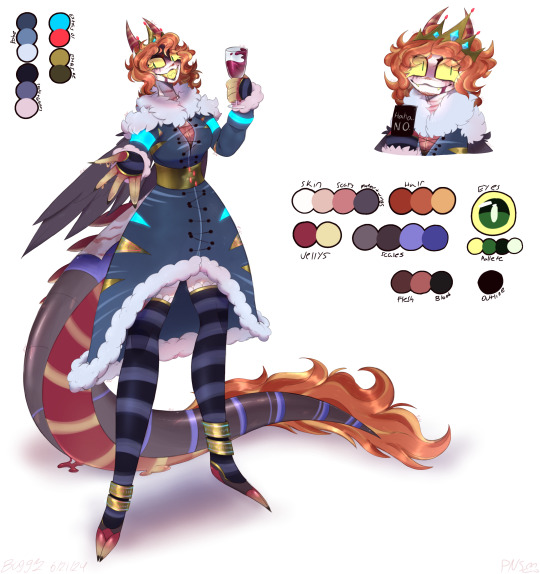
AND HES DONE!
After a few days this gae bacon-haired moron is finished & tbh I like this new ver of him more than his original design. (If you wanna see his original design the link is here- (Plz remember the post is pretty old on here as well as the pic bcs originally this fella was actually a Early b-Day gift for my frend back when this year just frikin started.)
& yes that is some wine coming out of his mouth. (He loves his wine) & of course.... Bro is flipping u off. (But it's censored, also I originally was gonna draw a bird crossed out but then I forgor SO LETS PRETEND ME FORGETTING WAS INTENTIONAL & NOT SOME GOOF I COMMITED!) Look we a bit of somewhat vulgarity even if I'm not the person who would just curse. (But I do say byastord, which this guy is, so its fitting.)
Also Lil rewrite of his bio bcs frik u:
|| Name: Abecias Malice (aka Adder'Synn Malkovich) | Gender: Male (Trans), He/Him | Age: ?? (Died at the age of 22-23) | Sexuality: Gae | Height: ??'?? ft (Possibly was 6'2 ft tall when alive) | Enithcity: ?? (Possibly was a Rozokeen/Osmort mix when still alive) | Personality: A very unhinged & crazed individual who seem to have a unhealthy obsession with men & himself?? Seems to really like seeing oeppel die yet despises getting himself dirty to the point that he will literally start avoiding anything that has a SINGLE speck of dirt! What im saying is, hes narcissistic, sadistic, & also very lazy & wants others to do stuff for him. (Also is very racist to bird ppl idk, why though) I Occupation: The King of his kingdom of Vallenfholt (This is Godhome's hew name) | Family: ?? (When alive he had a older brother, a younger sister, & 2 parent but one of them was ded) | Species: Bloopmo (Halflett type) (Formally), Ascended God | Other: Can't seem to get drunk from the wine he always drinks EVERY SINGLE FRIKIN DAY! Is literally a rich pompous a-hole who despises the porr, homeless, & ugly ppl. Also thinks the mailmen are coming for him /hj ||
(A lot of the info here is not filled on purpose bcs gods... dont really care about mortal nonsense.)
Extras: Was originally a college student (or whatever he was when he was still alive) pretty much dealing with a pretty ab*sive father who would not respect his identity & was basically a complete snake. Although one Adder just.. snapped & ran off the campus to drive to his father's house &... kill him... But that was not the end of it, by the next day he had murdered around 12 people & injuring 2 (that being his now ex- bf & his now rival) only to be killed by his once best friend, Hugo.. When he died his soul was sent into the ring of Wrath but over the years, the regret he had turned into pride... He enjoyed what he had become... Not only that but his personality had started to shift, become extremely lustful & abnormally greedy to also having his appearance be shifted also, this was normal for a Sinner, but this Sinner was different... He risen up the rank & eventually became a God, not a well known god but a God nonetheless. Eventually going up into Vallenfholt & making a kingdom there which suited his needs. He however became so obsessed with himself that he pretty much just lost it & became the thing he originally despised the most... A rich, greedy, & selfish monster like his father was. Not only that anyone was below him was eventually killed instantly in the arena that he built for prisoners (Usually bcs he didn't like bcs of their appearance) to fight to the death in. Now as for how the hell he became obsessed with men & started to h8 on bird ppl (+ the whole thing about the mailmen coming for him... idk bro-). Now keep in might he was BoRN in a time humans (the morons from earth) did NOT come to Eeross.
Also if you wanna see the uncensored puc of the guy flipping u goofs off then here- (plz click read more but if u are offended by ppl flipping u off plz don't.)

Yeh no body pic bcs this is a friend's oc (that I made for em) but it would be VERY WEIRD OF ME TO POST THAT! (Even if we are AroAce & its a *full body ref* but plz don't ask me to post it in respect of MY FRIEND!)
ANYWAYS CREDITS BCS I H8 MYSELF! (Not really but I sorta do.... I need help-)
Character: Created by ne but belongs to a frend of mine who I'm gonna keep anonymous but they are on here (I ain't gonna say who BCS THEY ARE MEANT TO BE ANONYMOUS!)
Art: MinE
Program: IbisPaint x.
Bubs' TOS: Plz don't repost/steal, trace, or recolor my art WITHOUT MY PERMISSION! If you do, I'll take yur femur and pelvis.. SO, DON'T THINK ABOUT IT! (The PNS on my blog's pinned post clearly means "Please No Steal" plz follow that rule.) If you do post my art on anything like yur blog or somewhere else (With my permission) PLEASE CREDIT ME!
#neptuniadoesstuff#art#n-verse#oc#frend oc#RoTG#realm of the gods#God of Beauty & Violence#King#Abecias Malice#Adder'Synn Malkovich#Adder#reference sheet#ref#Redraw#updated design#Wine addict
7 notes
·
View notes
Text
the sourest grapes!
They’re so predictable. Every time an institution displeases them (aka doesn’t make absurd exceptions) H&M clap back at them for having poor ethics. The funniest thing is they really think they can “cancel” them and even spends a fair amount of press on their beef.
Let’s recap every single entity they’ve had a tiff with, their clapback attempts, and the results of their little fight, shall we?
The RF. Their crime: Not appointing them first in line while allowing them to merch everything like Disney. Clapback: Oprah, “no one owns the word royal”, “service is universal”, “linked not ranked” and of course, “Lilibet.” Results: RF more popular than ever. QE remains her position in polls as one of the most admired people in the world. Kate climbs up in popularity and becomes more loved than ever. Meanwhile, the Harkles are still using their titles.
Facebook, Instagram, and Twitter. Their crime: Not duping all of their followers from their official RF accounts onto a new, non-Royal handle. Clapback: Refusing to sign up on any platforms as regular individuals. Accusations of how damaging bigtech is. Vague partnerships with “Center for Humane tech” and UCLA critical internet something and giving nonsensical speeches on ”the internet.” Results: Typical drama from all social media companies, but nothing to do with them. Engagement with platforms remains through the roof anyway because everyone is stuck inside arguing over COVID or politics or both. They’re forced to make all PR announcements through Archewell which no one pays attention to. As a result, no one outside of royal tumblr and DM readers remember they exist. Recently, they put out some PR about returning to social “on their own terms.” Feeling lonely?
DM and the entirety of the British press. Crime: Not blindly publishing Sunshine PR. Clapback: Multiple lawsuits. Promise to work with “young journalists.” Results: Meghan flirted with perjury and had to apologize for lying, I mean, “forgetting.” Messy emails from Jason are revealed. They still use DM and Sun for PR because no one else will cover them, and they win $1. Sorry, $1.34 converted to USD. As for young journalists, does Scooby lying about his age count?
UK home office. Crime: Not handing over government assets for hired private use. Clapback: The UK Govt is racist and conspiring with the RF to expose them to terrorists and off them. (Nevermind that the minister responsible is a woman of color.) Results: I don’t have a crystal ball, but I’m pretty sure they are not getting security paid for.
Uninsurable Olive Garden Chateau. Crime: Not realistically affordable without daddy Charles writing checks and Netflix stopping their production reimbursement requests after seeing nothing for 2 years. Clapback: “Not over the moon about it.” Results: Still there. Still paying crazy, crazy amounts for specialty insurance that these types of properties qualify for.
Spotify. Crime: Asking them to make more than one episode for their podcast. Clapback: They’re spreading vaccine disinformation! Results: Rumblings start from other celebrities jumping on the cancel Spotify bandwagon, but the Harkles are never, ever mentioned as one of them. Their press release gathers no attention except scorn for obvious bandwagon jumping and serves to remind everyone that they were recently in the news everywhere for failing to deliver any content.
Oops!
20 notes
·
View notes
Text
The Shared Dalek Universe of the 1960s: A Case Study
In 2011 (a little over ten years ago!), El Sandifer cited my dearly-beloved 1960s Who Annuals as examples of stories which ended up influencing the TV series many years down the line despite making an unrepentant hash of continuity.
Her first example is that the Doctor is called Dr. Who, and that he alternates between being from Earth on one page, and not being from Earth three pages later. I would point out that TV was doing much the same thing in those days, and went on flip-flopping basically until Jon Pertwee, so it’s not a terribly good argument to begin with.
However, she spends more time pondering the Daleks of the comics. These Daleks, she notes, are very different from those on television at the time. There are hordes of them, they travel in fleets of saucers, and they’re ruled by the Emperor. This contradiction, she argues, later fed back into the TV series in the RTD era, when huge fleets of Daleks became the norm and, earlier but still well after the first burst of Annuals, in the form of Patrick Troughton facing a very different Dalek Emperor in The Evil of the Daleks.
In no way do I wish to undermine Sandifer’s ultimate conclusion that “canon” in the sense of diegetic consistency is a red herring of little importance, and what matters for any sane definition of ‘canon’ is whether a story is referenced at all, not whether it’s contradicted.
However.
Having gone back to 1966′s The Dalek Outer Space Book, I have made a very startling discovery, in the story entitled The Secret of the Emperor. The rest is after the cut; I will leave you with a delightful panel from this story, showing the “bewildered” Dalek Emperor being bullied by knights at the Battle of Agincourt. (This is one of my favourite Doctor Who images ever, and if it doesn’t put a smile on your face I am not sure I want to take you seriously.)
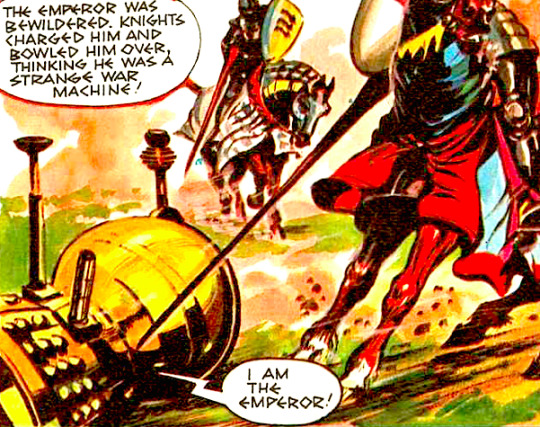
So, famously, when he debuted in the comics, the Dalek Emperor was not the giant, static Dalek later shown on television in The Evil of the Daleks and The Bad Wolf of the Ways; instead, he was golden, squat, and had a bulbous head; to house all the ego, one expects.
Thus, most people will point at the fact that when the Doctor met “the Emperor” in The Evil of the Daleks, he resided in a huge tower-like casing in the Dalek City, as evidence that although ideas received a first treatment in the comics which later made it to screens, no direct continuity was intended; the comics’ Emperor was an alternate, a first draft, to be discarded once a more definitive TV portrayal emerged.
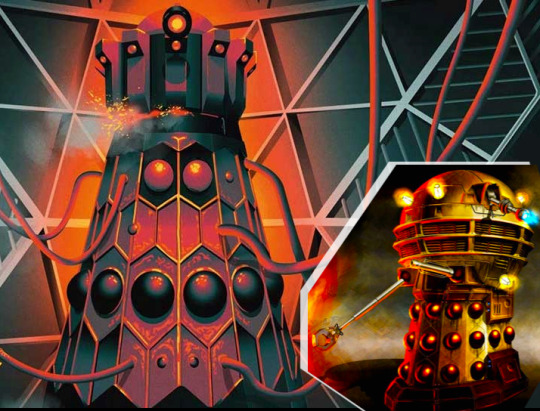
And yet, of course, it is somehow appealing to think of the two as the same Dalek, isn’t it? John Peel (Dalek writer voted most likely to be a 19th century Victorian man who stumbled into a time eddy; it’s mostly the remarkable sideburns) spent a lot of time in his Dalek novels establishing the life story of the Dalek Prime, the First Dalek Ever, who transitioned from the globe-headed casing to the towery Evil one and then deeply regretted it, what with the “getting killed by his own infighting troops with no way to escape”.
But this is usually viewed as a retcon. A cute retcon, an admirable retcon even, but a retcon. My good friend and esteemed fellow canon-welder, @rassilon-imprimatur, espoused such a view four years ago:

Well, all of this is, if you’ll pardon my French, bollocks. John Peel didn’t make anything up, except for the snappy name of “the Dalek Prime” as a designation for the individual. The Dalek Emperor in Evil of the Daleks was always the Emperor of the 1960s comics, and there is a very good reason for his seemingly-contradictory change of appearance. What’s more, I am not talking about murky authorial intent: these are things that the discerning Dalek fan in 1967 was meant to have known.
Let me wind back the clock to 1966. A Dalek master-plan is unfurling, a multi-media agenda spanning several years, more ambitious perhaps than even Time Lord Victorious in its scope; for the ultimate aim of a small cabal of men including David Whitaker, Terry Nation and Brad Ashton is nothing less than spinning the Daleks out of Doctor Who and into their own non-BBC TV show — to be made in America, and in colour, if you please!
For over a year now, a Dalek story arc has been running in the pages of TV Century 21, tracking the early rise of the Dalek Empire and its early interactions with 2060s humanity. Though the Daleks encroach over other parts of the book, including the headline stories, the bulk of this story arc comes in the form of weekly one-page comics making up one long serialised history of the Daleks, under the minimalist title of The Daleks.

Also under the solo brand of “The Daleks”: Annuals, an exclusive audio story, and, of course, toys. Time for Phase Two. It is time to end the Daleks’ endless confrontations with Dr Who on television, and set the stage for a new status quo able to support the TV series Nation dreams about.
Important background: Terry Nation, famously, does not like the Dalek Emperor. Whitaker made him up without consulting Nation, who maintains that the highest rank in the Dalek hierarchy should be the Dalek Supreme. The Emperor was hard to do away with in the comics, since he was basically the protagonist of the TV21 strip, but one imagines Nation was keen to jettison him from the world of the planned TV series.
I am speculating, of course, but I picture Nation sitting in his office, pondering the two great thorns in the side of the Independant Daleks Masterplan.
Thorn one: the Daleks are entangled with the Doctor both diegetically and symbolically; unless something can be done, the Daleks will remain “the Doctor’s enemies”, and a show where they commit evil and the Doctor fails to show up would ring false with the kids watching. The Daleks must be removed from Doctor Who in a sensational and definitive manner, or the whole enterprise is a nonstarter.
Thorn two: I, Terry Nation, have foolishly allowed David Whitaker to shape the lore of the Daleks, and he has made this Dalek Emperor guy very central to early Dalek history, leading up to the 22nd century Dalek Invasion of Earth that most of the Doctor’s subsequent conflicts with the Daleks have stemmed from. But I do not like the Dalek Emperor. I wish I could get rid of him in my new status quo.
…………Aha.
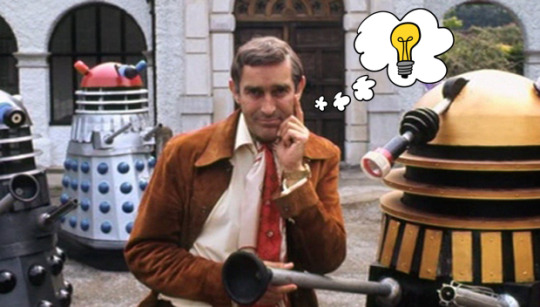
A triumphant Terry Nation adds a post-it note to the ever-widening corkboard representing the multimedia Dalek Masterplan setting up the TV series, which must already include things like “convince Jean Marsh to come back as Sara Kingdom”. Notes distilled from this corkboard will form the backbone of The Dalek Outer Space Book, this year’s Dalek annual, which exists principally to set up the prospective main characters of the new TV series: Sara Kingdom and Agent Mark Seven, of the Space Security Service.
The new post-it note reads:
Construe the Daleks’ enmity with the Doctor as a personal enmity between the Doctor and the Emperor, a la Sherlock Holmes and Moriarty. Have the Doctor triumph over the Emperor on TV in a big ‘event’ story.
Result: the Doctor-vs-Daleks storyline is over; the Emperor is dead; I get everything I ever wanted.
(Except maybe a pony.)
Then he phones David Whitaker, smirking all the while like an evil genie preparing to grant a badly-worded wish.
“Good news, old chap, I’ve decided you can write a new Dalek story for the BBC, all by yourself. I promise I won’t interfere.”
*confused and delighted David Whitaker noises*
“ And you can even bring in that Dalek Emperor of yours. Yes, you heard me!”
*Whitaker enthusiasm intensifies*
“Ahhh, but there’s a catch. The Dalek Emperor must DIE.”
Of course, like all good Faustian bargains, this is irresistible even though it is ruinous and the victim knows it to be ruinous. Whitaker agrees to the scheme. He and Nation begin planning out the events of the great finale of the Dalek-Doctor confrontation, which will hit the screens in 1967 as the mildly racist, but otherwise quite well-loved, ‘The Evil of the Daleks’.
Quickly enough, it is decided that Patrick Troughton crouching to berate the short and bubble-headed Golden Emperor would look silly. If the Emperor appears on TV, alongside human performers, then it should tower over them. Besides, this is to be the archvillainous Dalek Emperor’s last stand, and certain traditions must be followed.
Hence another task is added to the bucketlist of the Dalek Outer Space Book: tell the story of how the Emperor transformed from the globe-headed dwarf to some huge and terrible towering form under the Dalek City, for the Doctor to stumble onto later. This rebuilt Emperor may be teased, but must not be truly seen or truly defeated in the book; that would defeat the whole idea.
Hence, The Secret of the Emperor, a story which sees the Emperor becoming self-conscious about his own efficiency and letting the Scientist Daleks rebuild his casing from scratch. The final page is a splash panel, a delightfully nonsensical diagram of the mechanical components of the new casing.

The almost surreal array of colours and shapes is so arresting as to obscure an important detai. Many have seen this page over and over, and yet still missed it. The recent(ish) ‘Anatomy of the New Dalek Emperor’ artwork from Time Lord Victorious clearly looked at this page for reference, in spite of the fact that the TLV Emperor is much more inspired by the old Emperor than the rebuilt one.
Let me spell it out for you: look at the Scientist Daleks in the top right and centre-left. Look at them.
The new Emperor is huge.
And what else?
That Scientist on the left is plugging huge wires snaking from the wall into the tower-casing.
He now resides in the Great Hall of the Dalek City.
The background wall is a weird checkered pattern.
In addition, the following facts are seeded throughout the earlier pages of The Secret of the Emperor.
The point of moving to the new casing was to grant the Emperor increased brain capacity (suitable for concocting masterplans).
He acquired said increased brain capacity to help the Daleks attempt to overcome humanity once and for all.
The Emperor has recently had a trautmatic but eye-opening experience with time travel.
Ignore the fact that the Emperor was here depicted with what appears to be a still fairly bulbous, and golden, head, and it doesn’t take a genius to figure out that this is very, very direct setup for how the Doctor finds the Dalek Emperor in The Evil of the Daleks — tower-like, in an imperial throneroom in the Dalek City, with a checkered wall pattern, planning out a complicated scheme to harness time travel as a means of defeating humanity once and for all!
Yes, the designs don’t quite match — but how could the artist behind the visuals of Secret of the Emperor have known precisely what Shawcraft would build, a year later, based on the same basic description by Nation & Whitaker? The parallels far outweigh the minor differences in execution. (It’s worth noting that elsewhere in the Outer Space Book a different artist drew what was clearly intended to be the Golden Emperor as a large, golden, but normally-proportioned Dalek, so it’s not like the visual descriptions of these scripts were exceedingly precise…)

The rebuilt Emperor is never seen in the Outer Space Book outside of this ‘dissection’: he is heard throughout The Brain Tappers but kept carefully off-panel, and his new and dangerous new casing is pointedly not destroyed in the story’s conclusion. Well, of course not. That’s what Dr Who is for.
tl;dr: it is not a post hoc retcon, or even a secret, that the round-headed Emperor of the comics became the Dalek Emperor of Evil of the Daleks. A holistic view of the state of Dalek media in 1966-1967 shows that, in fact, it was the whole point that this be the Emperor of the comics; and that the comics had begun setting this up long before Patrick Troughton encountered Edward Waterfield on TV.
And thus, to circle back to Sandifer’s 2011 post, it is not enough to simply say that the “seemingly non-canon” comics inspired the show down the line. In fact in this instance, what appeared on Doctor Who existed for the benefit of the Daleks spin-off — not vice-versa!
#Daleks#Canon-Welding#Doctor Who#Analysis#Doctor Who Meta#Dalek Emperor#Dalek Prime#The Evil of the Daleks#Terry Nation#David Whitaker#Brad Ashton#The Secret of the Emperor#El Sandifer#Canon#Jacob Black
76 notes
·
View notes
Text
In Honor of Bogey
Born on Christmas Day at the turn of the century, the acting legend Humphrey Deforest Bogart is considered the greatest male acting icon of the Golden Age of Hollywood. He was an early Christmas gift to the 20th century and eventually was recognized by the AFI as the greatest male star of classic American cinema. This is quite a title to hold with all the great actors of the last one hundred years, so I wanted to take a little space in my analysis of the AFI top 100 to recognize this acting icon.
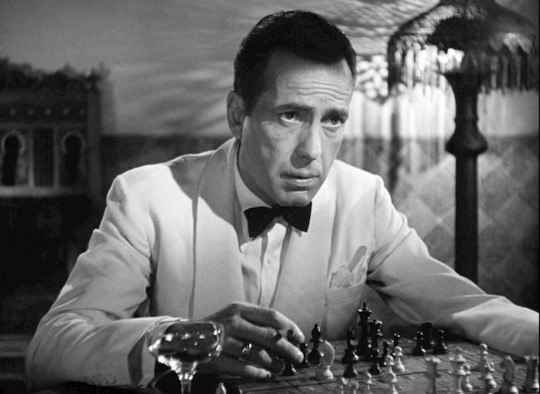
He was a kid with a lot of potential and intelligence, but his parents were not very affectionate (according to him) and he grew up with a chip on his shoulder. He went to some prestigious East Coast schools but was expelled or left on many occasions and ended up in the Navy. He joined up following the end of WWI and was part of the time of American Military glory. He loved it. He even tried to re-enlist when WW2 broke out, but he was too old and was instead registered as a volunteer reserve with the Coast Guard. He didn't get started in films until 1930, but started stage acting after his naval service in 1921. He might have gotten his trademark scar on his lip while in the Navy, but he got in a lot of scraps so it is not really certain where it came from.
Scars aside, Humphrey Bogart was a very good looking person that just exuded the ideal of manliness for the time. He started playing roles of young impetuous men and moved on to gangsters and villains. He did some work with James Cagney in a film called The Roaring Twenties. He met many woman with his star power and brutish manliness, marrying 4 times over his life before finally settling down with the fabulous Lauren Becall in 1945. He was part of the famous "Rat Pack" of the 50s. He was just so cool.
Since this is part of the AFI top 100 review, I want to cover the four movies on the list he was in as well as a couple other American classics:
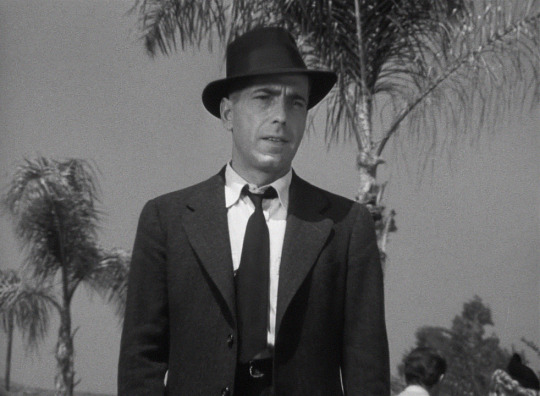
High Sierra (1941) - Nominated for AFI Top 100 but not ranked
This was a big opportunity for Bogart because it was a leading gangster role written by his drinking buddy John Huston. The part had been turned down by some of the great actors of the time, including James Cagney. Bogart had been getting a lot of small roles and appeared in as many films as he could at the time (he is credited in 20 movies between 1937 and 1939), but this was a big break as a leading man. He worked alongside Ida Lupino, which caused jealousy issues with his wife at the time, Mayo Methot.

The Maltese Falcon (1941) - AFI #31
This was a career starter for Bogart as the no nonsense anti-hero with a chip on his shoulder and a heart of gold. This film was also turned down by other more established leading actors (George Raft) because it was a remake of the same story that was done in 1931. He played the part of Sam Spade (great name), a detective in search of a bejeweled object while getting in way over his head. Bogie had a great smoky voice and his film noir narratives set the standard for the genre. It was also the directorial debut of John Huston. Humphrey Bogart was known for downplaying his work (such a hipster), but this was a film for which he openly showed pride.

Casablanca (1942) - AFI #3
This was Bogart's first real romantic lead as an expatriate in Africa at the outbreak of WWI. As far as my generation is concerned, this is his most famous role and cemented the man as a Hollywood icon. This movie won Best Picture and got him nominated for Best Actor, vaulting Bogart past James Cagney as the highest paid actor in Hollywood at the time (half a million a year; that is nothing to sneeze at now much less right after the Great Depression).

The Big Sleep (1946) - Not on AFI Top 100
This was arguably the most well known of the four movies that Bogart starred in with Lauren Bacall. His wife at the time, Methot, was jealous and was afraid that Bogart was cheating on her. He was. He and Methot got a divorce and he almost immediately married Bacall. Bogart also got a little bit weird at the time because he tried to sign up for the Navy and then bought a yacht, allowed use of it by the Coast Guard, and then patrolled around the California coast with numerous weekends around Catalina. The film was actually scheduled to be released in 1945, but had a bunch of scenes of sexual innuendo added in to play up the real life relationship of Bogart and Bacall.

The Treasure of the Sierra Madre (1947) - AFI #38
This was a film that showed the genius of Huston's writing and Bogart's acting. It was a chance to for Bogart to show off his grittiness and willing to suffer for his art. He character was one of three greedy men with stake on a gold claim that was more than enough for all three, but constant fear of backstabbing (literally and figuratively) causes problems. The movie was filmed in the Sierras during the summer heat and Bogart looked pretty bad. The movie lacked a love interest and highlighted dissension amongst a group, so Huston and Bogart (an outspoken liberal democrat) were mentioned in the Un-American Activities trial that was looking for Communists. Bogart wrote an article entitled "I'm No Communist" and distanced himself from anyone accused, but still had a slight reputation for being outspoken about first amendment rights.
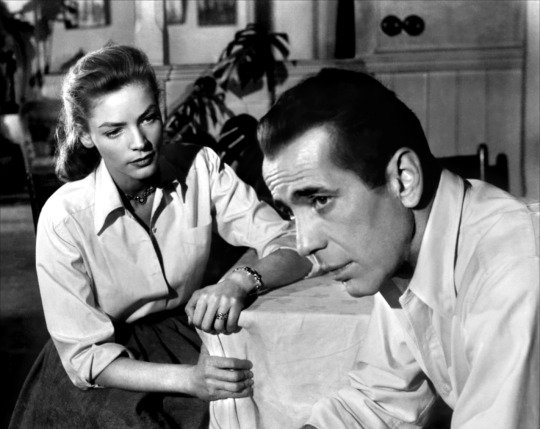
Key Largo (1948) - Not on AFI Top 100 but nominated for AFI Top 10 Gangster Films
The last film that featured the couple. In this movie, their characters were stuck in a Florida hotel during a hurricane. It was another John Huston directed film noir and featured Bogart's character boating around and taking out gangsters one by one. There is a somewhat racist subplot of hunting down some wanted Native Americans that a known gangster pins a murder on. That aspect of the movie always bothered me. A real standout that somewhat upstages Bogart (interestingly enough with his help) is actually the gangster's girlfriend who sings a song for the group to earn a drink. She plays a great part as a woman attracted by the villainous lifestyle and then becomes trapped in an abusive relationship. Actress Claire Trevor, who Bogart liked very much and encouraged throughout the film, won Best Supporting Actress for her part in the story.

The African Queen (1951) - AFI #65
Maybe the film with the most star power during the Old Hollywood Era, this film starts Katharine Hepburn and Humphrey Bogart, perhaps the two biggest stars of American film. It was his first film in Technicolor and the role won him his one and only Oscar for Best Actor. The film was shot in the Belgian Congo and once again proved Bogart's toughness. This was again a John Huston directed film and it is interesting that both of the stars of the film had friends in very high places that kept them acting in great roles: Humphrey Bogart had John Huston and Katharine Hepburn had Howard Hughes. I want to note that, in my humble opinion, this was neither actors best work but they both were given a lot of credit for braving the elements and appearing on screen looking haggard.

The Cain Mutiny (1954) - Nominated for AFI Top 100 but not ranked
This was the last film that Bogart was relatively happy with, although he had to drop his salary to get the part and he was bitter about it. The part of a paranoid captain earned the actor his final Oscar nomination, but it did not really bring the same satisfaction as earlier roles. Huston wrote Bogey's characters as a loner and an antihero with an internal warmth and humor. This character did not have the charm that exuded from Bogart, the person.
----------------------------------------------------------------------------
Humphrey Bogart continued with high profile roles like starring with Aubrey Hepburn in Sabrina (1954) and Ava Gardner in The Barefoot Contessa (1954), but he was starting to get sick from a life of smoking and drinking. He was also in his mid 50s and couldn't play that charming young loner that he was so famous for. He had started to come across as old and didn't have his youthful charisma. He really hated working with Billy Wilder and didn't want to be the distinguished older gentleman in Sabrina. He didn't want to work with Ava Gardner because she had just broken up with his drinking buddy, Frank Sinatra. These films were successful and Bogart was a true professional, but I would not call it his best work by any means.
Humphrey Bogart was a great actor and a true Hollywood icon. Through research and watching interviews, I don't think that he would have been somebody that I liked personally because he drank and smoked heavily while enjoying arguments and confrontation. He came off as a bit of a contrarian in his later interviews and that is something that has bothered me. Don't meet your heroes. It does not lessen his accomplishments as an actor nor does it reduce the number of great films he has starred in. Just because he wouldn't be my best friend doesn't mean he wasn't a great man. I still believe that he deserves the AFI honor of being Hollywood's most famous actor. Check out some of his works and see what you think.
#humphrey bogart#bogey#john huston#lauren bacall#key largo#casablanca#the caine mutiny#sabrina#katharine hepburn#the maltese falcon#the treasure of the sierra madre#introvert#introverts
44 notes
·
View notes
Text
emeralds and steel. (pt. 1)
─── ・ 。゚☆: *.☽ .* :☆゚. ───
a/n: hi! this is my bucky barnes x reader series! reader is afab and uses she/her pronouns in this! she is also born indian as i myself am indian and i don’t see enough indian representation, especially in fics. however, she knows many languages, so feel free to interpret her ethnicity as you see fit. i’m sorry for not posting anything over the past couple of days, as i was working on this! i hope you enjoy!
warnings: canon-typical violence, sexism, racism, implied racial slurs
tags: none so far, but if you would like to join the taglist, please fill out the taglist form!
summary: reader is a sorceress who was prophesized to be the host of the time stone. she has been alive since ancient greece and has been wandering the earth since. she cannot age nor die since she is now the body of an infinity stone. she was in the british royal military during the second world war, but didn’t see her strengths used well, so she signs up for the ssr: being shipped out to project rebirth with peggy carter.
─── ・ 。゚☆: *.☽ .* :☆゚. ───
“Rejected.”
“With all due respect, sir, I have been part of the British Royal Military far longer than you have had a job. I wish to join the Strategic Scientific Reserve, for which my resume is--to be honest--overqualified.”
“What would an Indian woman have to do with the British Royal Military? I find your story ineffably false.” The snooty man pushed his glasses up his nose and narrowed his eyes at her. Her tie was askew, her hair was all over the place, and her papers were in a bunch: only held together by her hands.
Just then, another woman walked by the desk, raising her eyebrows at the pair. “Don’t tell me you don’t recognize Lieutenant (l/n), Mr. Lowe. She’s got not one, but two doctorates in the sciences. I’d think she’s rather qualified for the SSR, regardless of her gender or race.” The man huffed and got up, storming off to who knows where. The woman smiled and held her hand out. “Agent Peggy Carter from the SSR. It’s a pleasure to finally meet you, Lieutenant.”
(Y/n) smiled, furrowing her brows, and shook Peggy’s hand. “I’m surprised you know who I am.”
“Nonsense, I’ve followed your career since I joined the military. You’re somewhat of a legend around these parts. Now, the head of the SSR heard of your application and is assigning you to Project Rebirth as a supervisor alongside myself. Your doctorates in chemistry and neuroscience will help us quite a lot.” She started walking towards a side door, motioning for (y/n) to follow. “There’s a plane waiting to take us to Camp Lehigh. Do you have luggage with you?”
She shook her head as she followed the woman. “I’m a light traveler. When you’re a lieutenant with no family you tend to have no roots in society.” (Y/n) gave Peggy a half-smile, waving away her concerned look. “I’m fine, Agent Carter. I’ve survived this long, haven’t I?”
“Indeed you have,” she said pensively. How could someone so strong have no one to rely on? The lieutenant was the first woman to hold such a high rank in the military and have so many degrees for her age. She was young, beautiful, and smart: everything a man could want. She would be expected to have a husband and kids, and yet she had no family. The woman had seemed to hold a sense of sadness as she said this, but she seemed empathetic and lively. Peggy intended to be her friend, whether (y/n) wanted her to or not. Maybe then she could find out what made her tick...
∘₊✧──────✧₊∘
(Y/n) stepped into place beside Peggy as they observed the candidates. The men looked buff and ready to charge into battle, that is, all but one. The scrawny man, sorry, boy that trailed after the others seemed like he belonged in a toy wagon playing with the other children rather than Camp Lehigh. “Ready to scare them, Agent Carter?”
“Always, Lieutenant.” Peggy walked forward, revealing herself to the men. “Recruits, attention! Gentlemen, I’m Agent Carter. I supervise all operations for this division.” (Y/n) smiled serenely at them as she walked forward and stood next to the agent. “For those of you who may not know me, I am Lieutenant (l/n), the assistant supervisor for this division.”
“What’s with the accent, Queen Victoria? Thought I was signing up for the U.S. Army.” The soldier internally rolled her eyes at the remark. Men, the bane of her existence. “And what’s with this...lieutenant? Didn’t know we were letting ni-”
(Y/n) shot forward and put him into a chokehold. “I dare you to finish that sentence, soldier. I am not to be discriminated against just because my skin is darker than yours, and if such foul words are going to come from your mouth, I daresay that we should wash it out and string it up on a clothesline.” She let him go and turned to Peggy, giving her a closed-eyed smile. “Would you like to do the honors, Agent Carter?”
“Certainly, though I think you’ve scared him enough.” The agent punched him, sending him straight to the ground. “That’ll teach you to respect women and especially women of color.”
∘₊✧──────✧₊∘
"Faster, ladies! Come on. My grandmother has more life in her, God rest her soul. Move it!”
“You’re not really thinking about picking Rogers, are you?” Colonel Phillips walked beside Dr. Erskine and the lieutenant, frowning at them. They couldn’t possibly be thinking of picking the runt of the group for the experiment of the decade, could they?
“I am more than just thinking about it. He is the clear choice.”
“When you brought a ninety-pound asthmatic onto my army base, I let it slide. I thought, what the hell? Maybe he’ll be useful to you, like a gerbil. I never thought you’d pick him.”
“Steven has character, Colonel, something that most of our recruits don’t,” (Y/n) cut in. “Dr. Erskine is right. He is the clear choice.”
The colonel sighed as he watched Steve fail to catch up with the rest. “Look at that. He’s making me cry.”
Erskine’s thick German accent was tinged with fatigue, as if he had run a marathon. “We are looking for qualities beyond the physical.”
“Do you know how long it took to set up this project?”
“Yes, we know, Colonel--”
“All the groveling I had to do in front of Senator What’s-His-Name’s committees?”
“Brandt. And yes, we know.”
“Then throw me a bone. Hodge passed every test we gave him. He’s big, he’s fast, he obeys orders. He’s a soldier.”
“Let me stop you there,” the lieutenant held out a hand, effectively stopping him in his tracks. “Not only is Hodge racist and sexist, he is also arrogant and rude. He is a bully.”
“You don’t win wars with niceness.” He fished a grenade out of a box, holding it out so they could see. “You win them with guts.” Phillips threw the grenade at the recruits, yelling, “Grenade!” and standing by to watch.
To the trio’s amazement, Steve jumped onto the grenade, willing to sacrifice himself to save others. The two doctors looked at the colonel, each hiding a smile. “It was a dummy grenade,” he informed. “All clear. Back in formation.”
“Is this a test?”
Colonel Phillips ignored the soldier, and grumbled, “He’s still skinny.” To his chagrin, the two doctors were proven right. Steve would become the new super soldier, even though he was far too weak.
─── ・ 。゚☆: *.☽ .* :☆゚. ───
a/n: this was a lot of fun to write! expect a part 2 come up in a couple days to a week! oh, and if you’d like me to create a playlist for this series, i’d love to! in the meantime, i have another special surprise~
© jades-tea-shop 2021. please do not modify, edit, copy or reproduce any of the works published.
#jade's ice cream#marvel#mcu#bucky barnes x reader#female reader#blossom diaries#🌸 — blossom#🌷 — sfw
26 notes
·
View notes
Text
David Byrne’s interview in NME magazine
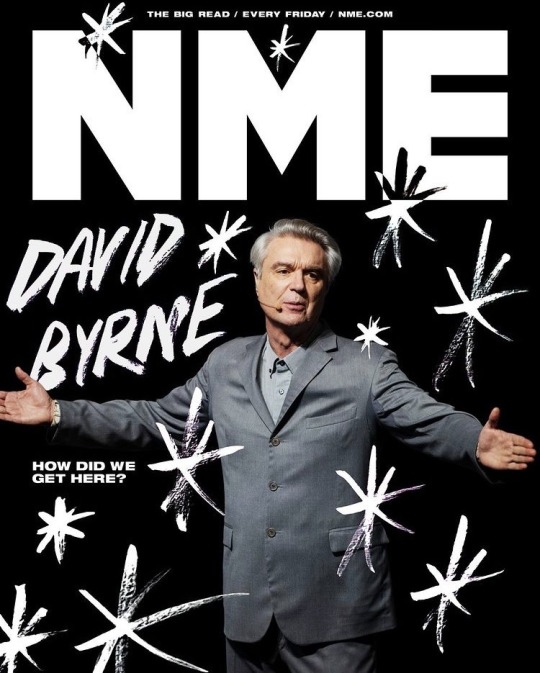
In 1979, David Byrne predicted Netflix. “It’ll be as easy to hook your computer up to a central television bank as it is to get the week’s groceries,” he told NME’s Max Bell, sitting in a Paris hotel considering the implications of Talking Heads’ dystopian single ‘Life During Wartime’.
He predicted the Apple Watch in that interview too: “[People will] be surrounded by computers the size of wrist watches.” And he foresaw surveillance culture and data harvesting: “Government surveillance becomes inevitable because there’s this dilemma when you have an increase in information storage. A lot of it is for your convenience, but as more information gets on file, it’s bound to be misused.”
In fact, over 40 years ago, he predicted the entire modern-day experience, as if he instinctively knew what was coming. “We’ll be cushioned by amazing technological development,” he said, “but sitting on Salvation Army furniture.”
The 68-year-old Byrne says today, “You can’t say that you know,” chuckling down a Zoom link from his home in New York and belying his reputation for awkwardness by seeming giddily relieved to be talking to someone. “It’s crazy to set yourself up as some sort of prophet. But there’s plenty of people who have done well with books where they claim to predict what’s going on. I suppose sometimes it’s possible to let yourself imagine, ‘Okay – what if?’ This can evolve into something that exists, can evolve into something more substantial, cheaper – these kinds of things.”
It’s been a lifelong gift. Byrne turned up at CBGBs in 1975 with his art school band Talking Heads touting ‘Psycho Killer’, as if predicting the punk scene’s angular melodic evolution, new wave, before punk was even called punk. In 1980, Talking Heads assimilated African beats and textures into their seminal ‘Remain In Light’ album, foreshadowing ‘world music’ and modern music’s globalist melting pot, then used it to warn America of the dangers of consumerism, selfishness and the collapse of civilisation. Pioneering or propheteering, Byrne has been on the front-line of musical evolution for 45 years, collaborating with fellow visionaries from Brian Eno to St Vincent’s Annie Clark, constantly imagining, ‘What if?’

The live music lockdown has been a frustrating freeze frame, but Byrne was already leading the way into music’s new normal. Launched in 2018, the tour to support his 10th solo album, ‘American Utopia’, has now turned into a cinematic marvel courtesy of Spike Lee – the concert film was released in the UK this week. The original tour was acclaimed as a live music revolution. Using remote technology, Byrne was able to remove all of the traditional equipment clutter from the stage and allow his musicians and dancers, in uniform grey suits and barefoot, to roam around a stage lined with curtains of metal chains with their instruments strapped to them. A Marshally distanced gig, if you will.
“As the show was conceptually coming together, I realised that once we had a completely empty stage the rulebook has now been thrown out,” Byrne says. “Now we can go anywhere and do anything. This is completely liberating. It means that people like drummers, for example, who are usually relegated to the back shadows, can now come to the front – all those kinds of things – which changes the whole dynamic.”
With six performers making up an entire drum kit and Byrne meandering through the choreography trying to navigate a nonsensical world, the show was his most striking and original since he jerked and jived around a constructed-mid-gig band set-up in Jonathan Demme’s legendary 1984 Talking Heads live film Stop Making Sense.
The American Utopia show embarked on a Broadway run last year, where Byrne super-fan Spike Lee saw it twice and leapt at the chance of turning the spectacle into Byrne’s second revolutionary live film, dotted with his musings on the human condition to illuminate the crux of the songs: institutional racism, our lack of modern connection, the erosion of democracy and, on opener ‘Here’, a lecture-like tour of the human brain, Byrne holding aloft a scale model, trying to fathom, ‘How do I work this?’
“I didn’t know how much of a fan Spike was!” Byrne laughs today. “He’d even go, ‘Why don’t you do this song? Why don’t you add this song in’. We knew one another casually so I could text him and say, ‘I want you to come and see our show; I think that you might be interested in making a film of it’.”
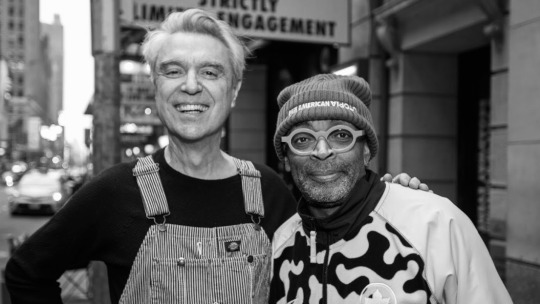
Are the days of the traditional stage set-up numbered? “Yes, I think so,” he replies. “At least in theatres and concert halls the size that I would normally play, yes. The fact that we can get the music digitally [means] a performance has to be really of value. It has to be really something special, because that’s where the performers are getting their money and that’s what the audience is paying for. They’re not paying very much for streaming music, but they are paying quite a bit to go and see a performance, so the performance has to give them value for money… It has to be really something to see.”
How does David Byrne envisage the future possibilities of live performance?
“I’ve seen a lot of things that hip-hop artists have done – like the Kanye West show where he emerges on a platform that floats above the stage,” he says. “I’d seen one with Kendrick Lamar where it was pretty much just him on stage, an empty stage with just him on stage and a DJ, somebody with a laptop – that was it. I thought, ‘Wow’. Then he started doing things with huge projections behind. There are lots of ways to do this. I love the idea of working with a band, with live musicians. ‘How can I innovate in this kind of way?’ It’s maybe easier for a hip-hop musician who doesn’t have a band to figure out. The pressure is on to come up with new ways of doing this.”
In liberating his musicians from fixed, immovable positions, American Utopia also acts as a metaphor for freeing our minds from our own ingrained ways of thinking. As Byrne intersperses Talking Heads classics such as ‘Once In A Lifetime’, ‘I Zimbra’ and ‘Road To Nowhere’ with choice solo cuts and tracks from ‘American Utopia’, he also dots the show with musings on an array of post-millennial questions: the health of democracy; the rise of xenophobia and fascism; our increasing reliance on materialism and online communication; the climate change threat; the existential nightmare of the dating app; and, crucially, the distances all of these things put between us.
“The ‘likes’ and friends and connections and everything that the internet enables,” he argues, “even Zoom calls like this, they’re no substitute for really being with other people. Calling social networks ‘social’ is a bit of an exaggeration.”
Byrne closes the show with the suggestion that, rather than isolate behind our LCD barriers, we should try to reconnect with each other. In an age when social media has descended into all-out thought war and anyone can find concocted ‘facts’ to support anything they want to believe, is that realistic?
“I have a little bit of hope,” he says. “Not every day, but some days. I have hope that people will abandon a lot of social media, that they’ll realise how intentionally addictive it is, and they’re actually being used, and that they might enjoy actually being with other people rather than just constantly scrolling through their phone. So, I’m a little bit optimistic that people will, in some ways, use this technology a little bit less than they have.”
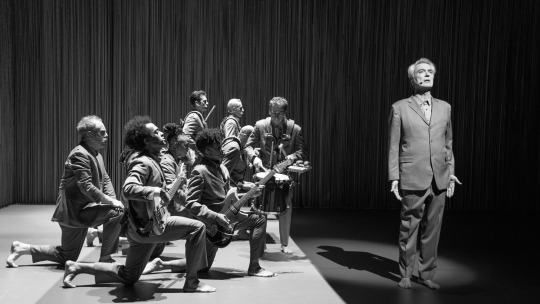
A key moment in American Utopia comes with Byrne’s cover of Janelle Monae’s ‘Hell You Talmbout’, a confrontational track shouting the names of African-Americans who have been killed by police or in racially motivated attacks – Eric Garner, Trayvon Martin, George Floyd and far, far too many more. Does Byrne think the civil unrest in the wake of Floyd’s death and the rise of the Black Lives Matter movement make a serious impact?
“We’ll see how long this continues,” he says, “but in projects that I’m working on – there’s a theatre project I’m working on in Denver, there’s the idea of bringing this show back to Broadway, there’s other projects – those issues came to the fore. Issues of diversity and inclusion and things like that, which were always there. Now they’re being taken more seriously. The producers and theatre owners realise that they can’t push those things aside, that they have to be included in the whole structure of how a show gets put together.”
“At least for now, that seems to be a big change. I see it in TV shows and other areas too. There’s a lot of tokenism, but there’s a lot of real opportunity and changed thinking as well.”
Elsewhere, he encourages his audience to register to vote, and had registration booths at the shows. He must have been pleased about the record turnout in the recent US election? “Yeah, the turnout was great. Now you just got to keep doing that. Gotta keep doing it at all the local elections, too. It was important for me not to endorse a political party or anything in the show but to say, ‘Listen, we can’t have a democracy if you don’t vote. You have to get out there and let your voice be heard and there’s lots of people trying to block it.’ We have to at least try.”
Will Trump’s loss help bring people together after four years with such a divisive influence in charge?
“Yes. I think for me Trump was not so much a shock; we knew who he is. He was around New York before that, in the reality show [The Apprentice], we knew what kind of character he was. What shocked me was how quickly the Republican party all fell into line behind him, behind this guy who’s obviously a racist, misogynist liar and everything else. But it’s kind of encouraging – although it’s taken four years and with some it’s only with the prospect of him being gone – that quite a few have been breaking ranks. There are some possibilities of bridge building being held out.”
But, he says, “It’s too early to celebrate,” concerned that Senate Majority Leader and fairweather Trump loyalist Mitch McConnell will use any Republican control of the Senate to block many of Biden’s policies from coming into effect. “[This] is what happened with Obama… I want to see real change happen. [Climate change] absolutely needs to be a priority. The clock had turned back over the last four years, so there’s a lot to be done. Whether there’s the willpower to do everything that needs to be done, it remains to be seen, but at least now it’s pointing in the right direction.”
How will he look back on the last four years? Byrne ponders. “I’m hoping that I look back at it as a near-miss.”
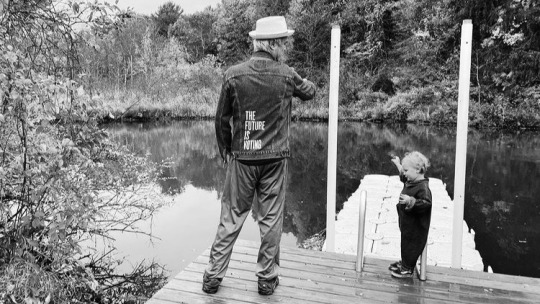
American Utopia is as much a personal journey as a dissection of modern ills. Ahead of ‘Everybody’s Coming To My House’, Byrne admits to being a rather socially awkward type. He claims that a choir of Detroit teenagers, when singing the song for the accompanying video, had imbued the song with a far more welcoming message than his own rendition, which found him wracked with the fear that his visitors might never leave. How does someone like that deal with celebrity?
“In a certain way it’s a blessing,” Byrne grins, “because I don’t have to go up to people to talk to them – they sometimes come up to me. In other ways it’s a little bit awkward. Celebrity itself seems very superficial and I have to constantly remind myself that your character, your behaviour and the work that you do is what’s important – not how well known you are, not this thing of celebrity. I learned early on it’s pretty easy to get carried away. But it does have its advantages. I had Spike Lee’s phone number, so I could text him.”
Talking Heads drummer Chris Frantz’s recent book Remain In Love suggests that the more successful Byrne got early on, the more distant he became.
Byrne nods. “I haven’t read the book, but I know that as we became more successful I definitely used some of that to be able to work on other projects. I worked on a dance score with [American choreographer] Twyla Tharp and I worked on a theatre piece with [director] Robert Wilson – other kinds of things – [and] I started working on directing some of the band’s music videos. So I guess I spent less time just hanging out. As often happens with bands, you start off being all best friends and doing everything together and after a while that gets to be a bit much. Everybody develops their own friends and it’s like, ‘I have my own friends too’. Everybody starts to have their own lives.”
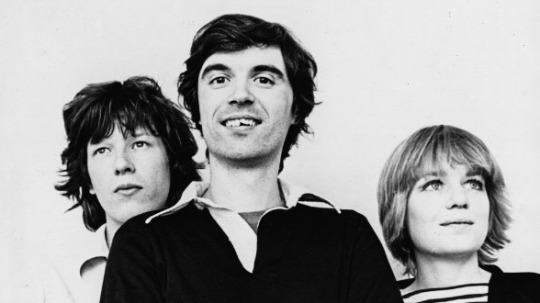
The future is far too enticing for David Byrne to consider revisiting the past. “I do live alone so sometimes it would get lonely”, he says of lockdown, but he’s been using his Covid downtime to cycle around undiscovered areas of New York and remain philosophical about the aftermath.
“We’ll see how long before the vaccine is in, before we return to being able to socialise,” he says, “but I’m also wondering, ‘How am I going to look at this year? Am I going to look at it as, “Oh yes, that’s the year that was to some extent taken away from our lives; our lives were put on pause?”’ We kept growing; we kept ageing; we keep eating, but it was almost like this barrier had been put up. It has been a period where, in a good way, it’s led us to question a lot of what we do. You get up in the morning and go, ‘Why am I doing this? What am I doing this for? What’s this about?’ Everything is questioned.”
Post-vaccine, he hopes to “travel a little bit” before looking into plans to bring the ‘American Utopia’ show back to Broadway, and possibly even to London if the financial aspects can be worked out. “Often when a show like that travels, the lead actors might travel,” Byrne explains, “but in this case it’s the entire cast that has to travel. So you’ve got a lot of hotel bills and all that kind of stuff. We wanted to do it. There might be a way, if we can figure that out.”
Once we all get our jab, will everyone come to recognise that, as Byrne sings on ‘American Utopia’s most inspiring track, ‘Every Day Is A Miracle’? “Optimistically, maybe,” he says. “There will be a lot of people who will just go, ‘Let’s get back to normal – get out to the bars, the clubs and discos’. That’s already been happening in New York; there’s been these underground parties where people just can’t help themselves. But after all this it’d be nice to think that people might reassess things a little bit.”
And with the algorithm as the new gatekeeper and technology beginning to subsume the sounds and consumption of music, what does the new wave Nostradamus foresee for rock in the coming decades? Will AIs soon be writing songs for other AIs to consume to inflate the numbers, cutting humanity out of the equation altogether?
“It seems like there’ll be a kind of factory,” Byrne predicts, “an AI factory of things like that, and of newspaper articles and all of this kind of stuff, and it will just exaggerate and duplicate human biases and weaknesses and stupidity. On the other hand, I was part of a panel a while back, and a guy told a story about how his listening habits were Afrofuturism and ambient music – those were his two favourite ways to go. The algorithm tried to find commonalities between the two so it could recommend things to him and he said it was hopeless. Everything it recommended was just horrible because it tried to find commonalities between these two very separate things. This just shows that we’re a little more eclectic than these machines would like to think.”
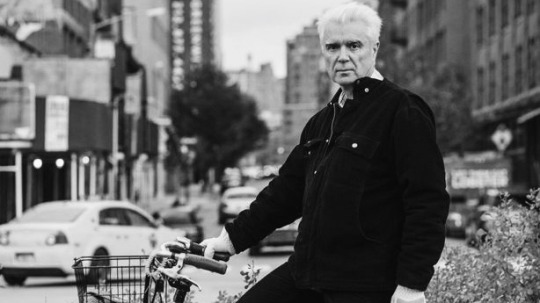
And in the distant future? Best prepare to welcome your new gloop overlords. Byrne isn’t concerned about The Singularity – the point at which machine intelligence supersedes ours and AI becomes God – but instead believes that future technologies will emulate microbial forms.
“I watched a documentary on slime moulds [a simple slimy organism] the other day,” he says, warming to his sticky theme. “Slime moulds are actually extremely intelligent for being a single-celled organism. They can build networks and bunches of them can communicate. They can learn, they have memories, they can do all these kinds of things that you wouldn’t expect a single-celled organism to be able to do.”
“I started thinking, ‘Well, is there a lesson there for AI and machine learning, of how all these emerging properties could be done with something as simple as a single cell?’ It’s all in there… when things interact, they become greater than the sum of their parts. I thought, okay, maybe the future of AI is not in imitating human brains, but imitating these other kinds of networks, these other kinds of intelligences. Forget about imitating human intelligence – there’s other kinds of intelligence out there, and that might be more fruitful. But I don’t know where that leads.”
His grin says he does know, that he has a vision of our icky soup-world future, but maybe the rest of the species isn’t yet advanced enough to handle it. But if we’re evolving towards disaster rather than utopia, we can trust David Byrne to give us plenty of warning.
December 18, 2020
#david byrne#talking heads#music#new wave#post-punk#art pop#avant funk#worldbeat#interview#nme magazine#2020
50 notes
·
View notes
Text
Book Reviews 3&4: Nancy Drew and the Lilac Inn by Carolyn Keene & Trixie Belden and the Secret of the Mansion by Julie Campbell Tatham
This review’s theme is girl detective books ! Audience age range: roughly 12 and up !
Just as Enid Blyton’s books made me fall in love with magical creatures and faraway lands, detective novels became an obsession during late primary school, with classic lead female characters Nancy Drew and Trixie Belden being my absolute favourites. My school had an extremely small and limited library, and the Nancy Drew books were one of the only decent series there- even with a great chunk of the collection missing. My mother introduced me to Trixie Belden, which she insisted was better than Nancy Drew, though I refused to listen to such a declaration at the time.
Now, though? My opinions have definitely changed.
Nostalgic review
Rating: ★★★★★
From memory, Nancy Drew is a clever, beautiful and well-off girl in her late teens, living with her lawyer father Carson Drew and her housekeeper Hannah Gruen, who has looked after Nancy since her mother’s passing when she was only three. I always enjoyed the dynamic between Nancy and her father, as it was similar to mine with my father, also a lawyer- Carson doesn’t step in unless Nancy needs his help, but he does assist in legal advice when necessary. I also loved Nancy’s friendship with the cousins Bess and George, and liked that her relationship with her ‘special friend’ Ned never got in the way of solving mysteries or hanging out with her friends (‘hanging out’ was practically code for sleuthing in these novels anyway). Overall, my memories of this series amount mostly to exciting searches for missing heiresses, finding beautiful jewels and battling crocodiles in Florida.
On the opposite side of the spectrum is Trixie Belden- rough-around-the-edges thirteen year-old from a poor family living with both her parents and three brothers. Where Nancy has a housekeeper, lives in an affluent suburban neighbourhood and never wants for money, Trixie lives on the outskirts of a small town, both her parents work, and she is constantly reminded of how important it is to work for money as they do not have much of it to spare on mindless things. Nancy is a fairly solitary character, often working alone unless her friends show up, and even then she does most of the legwork; Trixie is also the main sleuth in her series, but her best friend Honey is almost always at her side. While the mysteries were great, the warm friendships in Trixie Belden novels are what I remember best.
Regardless of whatever my thoughts may be after rereading books from these two series, I’ve never ceased referencing either of them and my love of the mystery genre still holds fast even now.
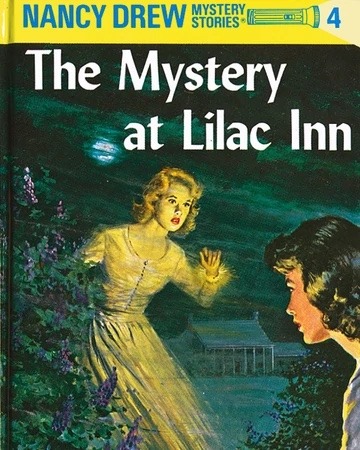
Nancy Drew and the Lilac Inn Review
Post-read: ★★
Synopsis: girl detective Nancy Drew is called to solve a series of odd goings on at her newly engaged friend Emily’s inn, in what seems to be an attempt to prevent Emily and her fiancé from opening. Disaster strikes when her aunt retrieves Emily’s inheritance of diamonds- Emily’s last hope to cover the costs of fixing up the inn- and they are swiftly stolen within the hour. Nancy vows to catch the thief and the intruder and save Emily’s inn from failure.
I struggled in choosing which Nancy Drew book to reread for this review, and after reading through multiple rankings lists I decided on the Lilac Inn because it ranked highly on every list. I now wish I had just gone with Crocodile Island anyway… at least there was something snappy about it. In between the bomb, the theft, the doppelganger, the underwater fake-shark, the kidnapping, the spear-gun attack- I think I’ve made my point. There’s far too much going on, and if it was well-written I would be okay with it, really I would, but it’s all so blandly articulated that half the time I had to reread just to make sure I’d read correctly what nonsense was occurring at any given time.
Straight out the gate, I just want to say how shocking the writing was- that’s shockingly bad, by the way. If I thought Enid Blyton’s work was stunted, well, this was far, far worse. Especially since it lacks the excuse of being written for young children. It was incredibly difficult to push through in the slower parts, and I must admit I basically skim-read the lead up parts to the action sequences (which were incredibly minimal compared to the gnashing crocodile teeth I longed for, but alas). Sadly for me, Bess (my old fave), George and Ned were not present at all, and I cannot remember if they had actually been introduced that early in the series because they are not mentioned once.
I did really like the concept of the story, and the element of Nancy having a creepy doppelganger posing as Nancy to cause mischief (she has several over the series) was fun, even more so that said doppelganger was an actual actress and quite ruthless in her attempts to steal Emily’s diamonds- I love a morally-corrupt pretty female villain as much as the next person, after all. There is a romance teased between Nancy and a young man staying at the inn, a young man who continuously seems to be in the same room as the diamond thief messing with Emily’s inn, but ultimately both never amount to anything. This hardly surprised me given the book is written in the thirties, and Ned and Nancy never do anything but attend dances together the entire series, but still, come on. He could’ve at least stolen the diamonds to add some spice to his useless appearances.
It’s possible that were a very talented scriptwriter to take this book and make it into a movie it could work out a lot better than it does on paper- provided the casting was done well. The sets would be interesting, and I think the creepiness of the ‘ghost’ in the orchard and the diving scenes would translate a lot better on camera. Normally I’m not one to nominate live actions of novels for no reason, but this thought kept recurring as I struggled to get through the writing.
Characters who aged well: Nancy is smart and weirdly good at everything (they don’t explain why she knows how to do all the things she does, but diving and freeing herself from bonds seems to be easy enough for her. Given male characters are always allowed to be perfect without training, I’ll allow it). For a female character written in the 30s she has plenty of agency and does not once rely on a man’s help to do anything, which is why I always enjoyed her books. Carson Drew also aged well- not present that often, but useful without being interfering, and his trust in his daughter is refreshing. As for the other main characters in the series… they didn’t even show up in this book so I can’t really comment on this.
Characters who aged badly: plot twist- I’m adding Nancy here too. She is a little too perfect, too polished, a common criticism by modern readers, though at the time of publication was her main selling point. Additionally, earlier editions of the series featured racist comments made by Nancy, although those have since been taken out. However, the publisher and creator of the first books was not a very pleasant person, so I find myself able to separate that from Nancy’s character.
Favourite scene/quote: ‘The article went on to tell that Nancy had just completed a course in advanced skin diving in the Muskoka River, and that she had finished first in total points in the twenty student group’.
I find this quote amusing because there is really no need for Nancy to be good at every single thing, and this is a good example of the many times throughout the series that Nancy is the ‘best’ at a very random activity that is often never mentioned again.
As for my favourite scene, though nothing interesting actually ends up happening in the orchard, I did like the eerie setting of Nancy dressing up as a ghost and chilling behind a tree for a while (okay it was partially eerie, mostly just oddly comedic). The actress/impostor posing as Nancy provided a few good scenes, too, but for the main villain of the story she was hardly in as many scenes as she should’ve been in.
After doing some research, I discovered something most interesting: Nancy was written with significantly more character by the original ghost-writer of the series, a woman named Mildred Wirt Benson, who wrote Nancy ‘embodying qualities that she wished she had’- but the publisher Edward Stratemeyer did not want a bold female character, and she was rewritten with similar dialogue but now accompanied with ‘dainty’ verbs to sweeten her words. Stratemeyer was also known for his beliefs that women belonged in the kitchen, and the only reason he created Nancy in the first place was to capitalise on young female readers who wanted their own equivalent of the Hardy Boys.
With all of this in mind, it’s very possible that the Nancy from my memories is a mix of the older and new editions, which allowed Nancy more personality as the series went on, no longer needing to confirm to the sexist expectations of the 1930s. And despite these origins, Nancy Drew aged quite well as an unintended feminist icon: she solves her mysteries alone and rarely needs Ned’s help at all; in fact, most of the time, Nancy is the one doing the saving. It’s nice to think that, almost one hundred years later, Mildred Wirt Benson’s version of Nancy is the one being kept alive, both on paper and onscreen.
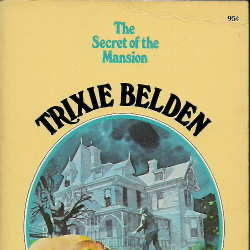
Trixie Belden and the Secret of the Mansion Review
Post-read: ★★★★★
Synopsis: energetic teen Trixie Belden’s boring town of Sleepyside is turned upside down when a rich new family moves onto the property opposite her own, an old miser winds up in hospital and his empty mansion is suddenly inhabited by a runaway boy, and a missing fortune is waiting to be uncovered.
Whewww.
This was a massive breath of fresh air after the Lilac Inn! After being so unimpressed by both Blyton and Keene’s writing, Tatham’s writing restored my faith in my childhood judgement. Her words flowed well and the conversation between the characters was very natural. The blank slate characters in the Lilac Inn were showed up by the animated and multiple-dimensional characters in the Secret of the Mansion, and I never once felt the need to rush myself through the chapters.
Unlike my method of choosing a Nancy Drew book, I simply decided on reading the first Trixie book for this review. While I almost went for a later book where all the main characters had been introduced, I couldn’t remember how Trixie first met Honey and Jim, which I felt was pretty important to her character. I’m very glad I did. Even in the first book, Trixie endures so much character development (contrasting very strongly with Nancy’s flawless existence). Longing for a friend, Trixie takes herself up the hill to the newly habited mansion to introduce herself and her little brother Bobby, who she is babysitting to earn money to buy herself a horse. There she meets rich girl Honey Wheeler, a sickly and sheltered but sweet girl of the same age, whose parents pay little attention to her. Things fall into place with all the expected luck of a teen heroine- Honey’s governess is a lovely woman who wants Honey to befriend Trixie and offers to look after Bobby, and of course Honey’s stables are now filled with horses and a stable hand who can teach her to ride.
But for every easy thing comes an opportunity for Trixie to grow: she comes to admire Honey’s bravery after previously being irritated by her fear of trying outdoor activities; she ignores the stable hand’s orders not to ride the stallion and falls as a result, leading to her having to work to regain his trust and also being taught the valuable lesson to recognise her own limits; finally, as much as Trixie hates looking after little Bobby, when he is bitten by a snake Trixie is resourceful and quick on her feet in helping him, keeping him well enough until a doctor and other adults arrive.
Rather like the Lilac Inn, the mystery of the story centres on the hidden will to a supposed fortune of the elderly man who lived in the old mansion not far from Honey’s new home. On a whim, Trixie nags Honey into accompanying her to snoop around the building, leading to their discovery of the old man’s nephew Jim hiding there. By the end of the book, the girls have helped Jim to find the will and safely escape his abusive step-father. Later in the series, Jim is adopted by the Wheeler family, and also becomes Trixie’s primary love interest (I love that this relationship is not at all rushed either).
The reading level for the Trixie Belden series is listed as grade 3 and above, but I had no problems being completely involved and intrigued by the storyline and characters as a twenty-three year old. I think I’ll continue to read the series on my own time, as I always enjoyed the full character line-up developed after a few books in.
Characters who aged well: Trixie! If my praise during this review didn’t make clear enough, she’s a wonderful character with great development. Honey and Jim are also solid characters, and Bobby and Trixie’s parents are well-written too- supportive and kind, but realistic concerning raising Trixie to be a responsible kid. Also going to add that Trixie’s group of best friends- self-named the Bob-Whites of the Glen and consisting of her two older brothers Brian and Mart, Honey, Jim and the later additions of Dan and Di- have a strong presence and very distinct personalities when they show up in the later novels.
Characters who aged badly: nobody! All the side characters were well done, including the villain. He wasn’t over-the-top by any means, his abuse of Jim was both emotion and physical in a realistic manner that concerned the adults around him enough to comment on it without actually taking proper action to help him, as it often goes. I appreciated the author’s ability to write a male character the vulnerable one, to recognise what was wrong about the situation, and to gladly accept help from two girls younger than him.
Favourite scene/quote: “‘serves him right,’ Trixie said, wiping her grimy hands on her rolled-up blue jeans. ‘The mean old miser. You should have left him lying in the driveway, Dad.’”
An earlier quote in the book, this sets the tone for Trixie’s character: she’s messy, no-nonsense and cheeky. For a female character written in 1948 I found this quite amusing. There’s none of the internalised misogyny that often popped up in ‘tomboy’ characters of the time: Trixie just is what she is, and she’s great.
A standout scene would be Trixie sucking the venom from her brother’s snakebite to save him, and the chapters focused on the developing friendship with Honey and Jim while the two teach Trixie how to handle horses is also enjoyable.
Overall verdict:
My mother was right, Trixie Belden is far better than Nancy Drew in every category I can think of. I wish that the series had gained the popularity that Nancy Drew did, because it would make for a fun movie or television show. There is an eighteen year gap between the publication of the first novel from both series, and both heroines saw many more books written after that. Nancy Drew is so persistent, however, that multiple movies and even a recent CW show have been made, though it is not very accurate to the books at all. Even now, modern-day setting Nancy Drew mysteries are still being released under the Carolyn Keene pseudonym, showing her unending mythical status.
I still love Nancy, bad writing and all, but in all fairness, Miss Trixie deserves a cut of the nostalgic hype surrounding the girl-detective genre. I’d also like to bask in the poetic justice of Nancy not only remaining a more iconic character than the Hardy Boys, but also becoming more feminist as time goes on. I’m sure the publisher is rolling in his grave!
#nancy drew#carolyn keene#trixie belden#girl detective#fiction#university project#nostalgia#feminism#female characters
11 notes
·
View notes
Text
{ cisgender woman, she/her } ❝ Thank god women learned to whisper / though I crave a megaphone. ❞ huh, who’s CAITRIONA BALFE? no, you’re mistaken, that’s actually ASTORIA MALFOY (NEÉ GREENGRASS). she is a 47 year old PUREBLOOD witch who is CHIEF WARLOCK OF THE WIZENGAMOT. she is known for being JUDGEMENTAL, DISHONEST, COLD, RIGID, and CALLOUS but also PRACTICAL, DRIVEN, INNOVATIVE, STEADFAST and DISCIPLINED, so that must be why she always reminds me of the song TOMORROW - MINER and BLACK LEATHER BRIEFCASES, THE CLICK OF HIGH HEELS ON TILE FLOORS, THE LINGERING TASTE OF FAIRY FLOSS, BURGUNDY NAIL POLISH, AND PEARL HAIR PINS. i hear she is aligned with NO ONE so be sure to keep an eye on her.
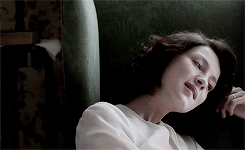
BIO
Cursed with a blood malediction that left her and her parents preoccupied with maintaining her health throughout early childhood, Astoria grew up without direction, without passion, and without much to do or think about other than staying alive. She did what she was told and completed what was asked of her by her parents: mostly swallowing thick potions that made her head spin and remaining in bed when all she wanted to do was tumble through the lush gardens of the Greengrass estate and scrape her knees like other children. As she grew older and defied Healers’ expectations — making it past 5, then 10, then 15 — Astoria grew weary of the half-life she’d been prescribed. At Hogwarts, she followed her sister Daphne into Slytherin because she didn’t know where else to go.
It took Astoria almost a year at Hogwarts before she would speak up in class or acknowledge anyone with more than a handful of words — and each time she did her heartbeat would quicken, her face would flush. If she was called on by a professor and — Merlin forbid — got the answer wrong, her eyes would fill with tears, her gaze would shift to the floor, and she wouldn’t be able to breathe. One day, outside her second-year Transfiguration class, an annoying boy named Colin saw her heavy breathing and told her about panic attacks — Astoria’s irrational fear of social situations and new people now made sense.
That same annoying boy became her close friend not long after. It was a month into study sessions by the Black Lake that Astoria Greengrass learned that her Colin, the boy who kept a camera slung around his neck at all times and was so nice to her, was Colin Creevey, yes, that Colin Creevey, who was petrified by a Basilisk a year prior for being MUGGLEBORN. Astoria found that didn’t bother her very much. Sure, she never advertised that they were friends and didn’t freely associate with Colin in public places, but he understood her position or in the very least, didn’t protest it. She even got him to join Herbology club — though she insisted that they enter and exit the greenhouse at different times and never spoke directly, his presence was a comforting balm.
Colin tried to get her to join up with the student resistance that was brewing in her third year — but Astoria knew she wasn’t the type to stir up such trouble. She couldn’t stand with the muggleborns and blood traitors no matter how right they were; she couldn’t risk losing her family. Unlike those in Dumbledore’s Army, Astoria didn’t see this conflict in terms of black and white, good vs. evil — there were plenty of others like her, struggling to find themselves in the midst of conflict, battling tradition and family expectations. She kept out of Umbridge’s way during that time. Kept out of her father’s way during that time — while he had no Dark Mark to speak of, his entrepreneurial hands passed cursed objects and ingredients for poisons to any Dark Lord-aligned wix who wanted them.
Through her friendship with Colin and her time in Herbology Club, Astoria learned she was a talented witch in her own right. Formed an identity outside of being the sick girl everyone doted on. Quietly realized that her muggleborn classmates — despite what her pureblood indoctrination taught her — were fully-fledged human beings. To someone who didn’t grow up feeling trapped in the (sometimes socially constructed) confines of a blood illness, perhaps her time in Herbology Club wouldn’t seem so transformative. But for Astoria, it was everything.
Nowadays, Astoria is still defying life expectancy estimations and is perhaps best known for her robust political career. She joined the Ministry as a pupil/intern in its Wizengamot Instruction in Magical Law Program (W.I.M.P.), and in the span of twenty-five years has climbed the ranks to barrister’s assistant, barrister, then Wizengamot member, and finally, the youngest Chief Warlock of the Wizengamot in the last hundred years. She is extremely opinionated about the runnings of the legislature and judiciary, and her past two years as Chief Warlock have been marked by her love for procedure, due process, and fairness -- essentially meaning trials are very thorough and very focused on making sure the Ministry doesn’t overstep its bounds.
BLOOD MALEDICTION
i’m truly on my bullshit and this needs its own section..........,,,,, i’m sorry
I originally started writing Astoria out of pure spite — it enraged and continues to enrage me that all we’re given about this woman is a few lines about her and an off-page (or off-stage, I guess, but Cursed Child is its own beast) death. It makes me mad that she is only defined by her role as a mother and wife to Scorpius and Draco, that she doesn’t get her own ambitions and a life of her own. The racist and sexist underpinnings of the blood malediction/Maledictus concept are par the course for JK but still, bad!
And while I can’t choose for Astoria to have this particular chronic illness and completely divorce it from those origins, I can at least eschew parts of it I don’t like and give a Astoria a rich and fulfilling life with a chronic/potentially terminal illness — not in spite of the blood curse, but because those of us with illnesses and disabilities are people with rich and fulfilling lives, wants, desires, and ambitions.
AN IMPORTANT NOTE: I try to be really careful about ableist language when I describe this blood malediction and its effects on Astoria’s life — I think that there is so much to explore regarding chronic illness and what, exactly, we constitute as ‘health’ — but I know that I can fall into the traps of my own internalized ableism. If there are terms or concepts here that make players uncomfortable and/or have harmful effects, let me know! I’m happy to make changes.
So anyway!
— origins of the blood malediction
I don’t have this fully worked out, but I think the Greengrass blood malediction stretches back a good ten generations to a very vindictive-in-her-righteous-cause-Muggleborn-witch cursing the family for their refusal to let her marry their son. It’s not limited to just the girls in the family, because I hate that, but it does affect at least one child per generation, so long as the family continues to marry exclusively purebloods — which they have continued to do, not knowing that their bigotry (though in some cases, real love!) is the reason for the curse’s spread. Astoria’s parents mistakenly believed that since the last few cases of the curse had cropped up in different branches of the Greengrass family — distant cousins living on the Continent — that their children would be spared.
— astoria’s symptoms and treatment
Since it’s a blood curse, I figure Astoria’s symptoms manifest as issues both with her blood and with her cardiovascular system at large. I’d compare it to haemophilia. Her blood itself is thin and cannot clot without healing spells and thickening potions, meaning that nosebleeds are frequent, bruising is easy, and bad cuts can be fatal. She’s at high risk for internal bleeding in her joints, and a big — though often unvoiced fear — of hers is a brain aneurysm that ruptures into a haemorrhage.
(miscarriage tw) These symptoms have waxed and waned her entire life, with particular incidents that have brought her close to death; an accident falling from the garden wall at five, a wayward spell hitting her across the face in second-year DADA, trying for a child. She doesn’t regret that last one — not at all — though it was five weeks after her miscarriage before she was able to stand unassisted, and her Healer’s face when she said “I strongly advise you to not have any more children” haunts her to this day. Scorpius’s birth, possible due to a wonderful surrogate, was alternatively the happiest day of her life. (end miscarriage tw)
Then there come the potions — a barrage of them, to be taken at specific times of day, with extras if she’s bleeding externally or feeling pain in particular areas — that come with side effects like exhaustion, headaches, and nausea. She visits St. Mungo’s once every three months to ensure that the potions are working as intended and has learned to accept her Healers chastising her for the times she skips parts of the regimen or pushes herself too far physically.
PERSONALITY
astoria!!! my love. clearly i have a lot of thoughts and Feelings about her lol,,,,,,,
there isn’t any world or timeline in which astoria would be rushing to join the death eaters -- lol, i’ve always envisioned her being extremely inquisitive and Critical of other people, their motivations, their methods -- this makes her extremely Good at Lawyering and Suspicious of Bullshit. i also have always thought that it was important for her to make a muggleborn friend or two just to really hammer the point home that pureblood nonsense is just that.
still, again, she’s not really motivated by niceness, she doesn’t have a bleeding-heart-sense-of-empathy, she’s kind of snarky and mean. her friends describe her as an acquired taste.
has a massive sweet tooth. her family is regularly concerned she does not eat enough vegetables.
adores her son. just, absolutely thinks he can do no wrong. she and draco agree that most parents think their child is the most perfect and amazing child in the world, but scorpius actually is the most perfect and amazing child in the world, so.
a note on astoria and draco: i think draco doesn’t treat her with pity or kid gloves, and has never underestimated her capacity to get shit done in light of her blood curse. and they have an honesty and rapport with each other that astoria hasn’t been able to cultivate with anyone else. they may not be very great people but they’re great partners and great parents. i luv them ok bye
STATS
GENERAL
name. astoria céline malfoy (née greengrass)
nickname. aster (reserved for use by her sister only!)
birthdate. 1 january 1982
place of birth. greengrass residence via midwifery
family. daphne greengrass (sister), draco malfoy (husband), scorpius malfoy (son)
residence. malfoy manor, wiltshire
occupation. chief warlock of the wizengamot
gender identity. woman
romantic orientation. biromantic
sexuality. bisexual
blood status. pureblood
relationship status. married
pets. a scottish terrier named hades
HOGWARTS / MAGIC
house. slytherin
extracurriculars/leadership. herbology club
allegiance. neutral/no one
n.e.w.t. grades charms (o), transfiguration (o), herbology (o), d.a.d.a (a), potions (a), arithmancy, astronomy (o), history of magic (a), ancient runes (e).
wand. willow, nine inches, unicorn hair core
boggart. tbd
patronus. also tbd! my brain hurts
magical strengths. nonverbal casting, herbology, transfiguration, ancient runes
magical weaknesses. flying, defensive spells, domestic spells
14 notes
·
View notes
Text
Lentils’ 2020 Christmas Movie Rankings
My wife and I watched a lot of Christmas movies this year, and I thought it would be fun to rank them based on which ones I think were most watchable and enjoyable. I’ve left out a few that we watched during this time period, which are classic Christmas movies (Miracle on 34th Street), action movies set at Christmas (Kiss Kiss Bang Bang and Iron Man 3), or older romances set around Christmas (While You Were Sleeping and You’ve Got Mail), because it’s not fair to rank these amongst, well, some of the movies we saw.
my top 5, for those of you who don’t like reading (which is fair): The Princess Switch: Switched Again, Dashing in December, The Princess Switch, Jingle Jangle, Happiest Season.
my top 3 Chaotic Christmas Movies: A New York Christmas Wedding, 12 Pups of Christmas, The Princess Switch: Switched Again. Please watch these movies if you enjoy chaotic plots. Please especially watch the first two I listed because holy shit my summaries do not properly convey the chaos.
The Princess Switch: Switched Again (2020): Some people on the internet have been VERY RUDE about this movie and I’m sorry they don’t appreciate a true chaotic holiday gem when they see it. This movie involves two Vanessa Hudgenses, Scheduled Vanessa and Spontaneous Vanessa, who are distant cousins and not twins, switching places to try to facilitate Spontaneous Vanessa getting back together with her ex the baker, but Scheduled Vanessa is intercepted by a third cousin Vanessa, Horny Vanessa, who wants to take Spontaneous Vanessa’s place as queen. I don’t want to spoil anything that happens in this movie so that you can experience the batshittery for yourself, but I found every second absolutely delightful. It also has two very good romantic couples who are cute and who genuinely seem to like each other, which is not something I can say for every movie on this list!
Dashing in December (2020): This movie has gay cowboys, is set on a ranch, and features a squaredancing scene, so if that isn’t your bag, you are probably not going to like it very much. I found it deeply charming and the only reason it isn’t #1 is that three quarters of the way through, the lead suddenly turns back into a giant jerk for no real reason and that was very upsetting. But it all works out in the end. The main romance is very cute, there are horses, the horsemanship doesn’t totally suck ass, and there are some fun side characters. It’s not reinventing the wheel, but it’s pleasant.
The Princess Switch (2018): Again, some people are mean about this movie and they shouldn’t be because it is CUTE GODDAMMIT. It is absolutely The Prince and the Pauper but with two Vanessa Hudgenses, but also, it shows the aforementioned two good romantic couples falling in love and they are delightful. I am not saying this is a great masterpiece of romance, but the filmmakers actually tried to give these characters reasons to like each other, which, again, is not true for some of the movies on this list.\
Jingle Jangle (2020): I kind of feel bad putting this movie on the same list as TV movies that were obviously just shit out by Hallmark or whoever, because this clearly had a lot of love and heart put into it, and it really shows. I was so immediately charmed by this movie that I didn’t even mind when it immediately went in very silly directions. I don’t know if the plot makes sense at all (a cute robot shows up for seemingly no reason other than that cute robots are fun!) but it doesn’t have to, because everyone is having so much fun and there’s so much joy in this movie that I was just happy to be along for the ride. Also, I would love to see an entire movie in the stop-motion style from the opening scene.
Happiest Season (2020): I absolutely understand why some people didn’t like this movie, and I don’t want anyone to feel like they can’t dislike it, and also, it’s MY movie, and I love it, and I’m not interested in fighting about it. It helped me come out to my parents and also featured two of my faves kissing and that’s all I need.
Noelle (2019): I was previously under the impression this movie was bad, and I don’t know why, because it’s a little embarrassing and cheesy at times, but it’s sweet. I suspect what will make or break it for you is if you like Anna Kendrick, and because I like Anna Kendrick, I like watching her play a neurotic Claus sibling trying desperately to fix the problem she accidentally caused. One weird thing though: this movie tried to convince me about halfway through that she was both spoiled and selfish, and I don’t actually think that’s true at all. I think she was a little naive and sheltered and wanted people to like her way too much, but she’s not really shown to be a selfish person - she’s constantly paying attention to other people in the real world and her brother is the one who refused to admit that he wasn’t cut out for the Santa gig and instead fucked off to “find himself” or whatever. It was weird! But anyway, I liked this movie a lot.
I’ll Be Home For Christmas (1998): So this movie...one Christmas Eve when I was in high school, I was having trouble falling asleep for whatever reason so I went downstairs to get some water. My mom happened to have the TV on and this movie was just starting, and she invited me to join her. Fun fact: this movie went to theaters and it stars Jonathan Taylor-Thomas and Jessica Biel. It is one of the dumbest movies I’ve ever seen in my life and at no point does anyone in it actually behave like a human being. It’s about a smooth-talking jackass who has to be bribed to come home for Christmas and then, after one of his dumbass moneymaking schemes lands him in hot water, he gets abandoned in the middle of the California desert wearing a Santa suit and glued-on beard. He then has to beg, lie, and cheat his way home for Christmas dinner so that his dad will give him a vintage Porsche they fixed up together. I have no defense for this character; he is insufferable and only becomes marginally less so by the end of the film. But also, I have to watch this movie every year (usually with my mom, although not this year for obvious reasons) or it doesn’t feel like Christmas.
A Cinderella Story: Christmas Wish (2019): We own this on DVD and have seen it three times. In our defense, we wanted to support Gregg Sulkin from Runaways and Isabella Gomez from One Day at a Time, both of whom feature prominently in this movie, and also sing songs. This is just Cinderella But At Christmas, and if that doesn’t sound like fun to you, I don’t think anything I can say will change your mind. I will say that the songs are amusingly autotuned, there’s a disabled dog that’s very cute, and I personally think that the leads have slightly better chemistry than some of the pairs on this list. But it is literally just another Cinderella Story movie.
The Knight Before Christmas (2019): This movie is Thor (2011) But At Christmas, and it would have been slightly higher except I always forget about the plot where at the end the knight becomes a cop. Bad, obviously! But anyway, the plot of this movie is: nice but clueless dude crash-lands on Earth for Reasons and bumbles around trying to figure out what’s up, while falling in love with a nice lady. That’s just Thor and you know I’m right. And for as dumb as this movie is, at least it’s ambitious. I have learned that Christmas movies can do one of two things to please me: a) have actors that have decent chemistry and charm and are fully committed to whatever nonsense is going on, or b) have absolutely batshit chaotic plots. This movie is like a 4 out of 5 on the chaos scale and I like it a lot, besides the copaganda. I hope this also gets made into a trilogy and Cole isn’t a cop anymore.
A Christmas Prince 3: The Royal Baby (2019): I will get into my problems with the first two Christmas Prince movies later, but my main criticism is that they are kind of boring and not chaotic enough. This one decided to make up for that by incorporating a missing ancient treaty, a curse, and a ghost, as well as a subplot about Girl Power (I use this semi-ironically) and a subplot about cousin Simon potentially committing treason again. I was so excited that things were happening in this movie the first time I watched it that I may be a little biased, but oh well. Oh, I was also absolutely terrified it was going to be racist and it is...mostly not? There are a few questionable moments but like mostly it’s fine.
Christmas With the Prince (2018): I wanted to watch this because the summary on Netflix did not match the summary on Google at all, and that’s because, uh, they’re both sort of right? Ostensibly this movie is about a pediatric oncologist who comes back into contact with an old almost-flame, who just happens to be the prince of a tiny European country, because he fucked up his leg and needs somewhere private to stay. And apparently a pediatric oncology ward is the best place for that? But then after they fall in love this random Russian lady shows up and is like “that’s my fiance.” This happens maybe twenty minutes from the end. Anyway, this movie isn’t great but I liked the lead guy way more than I thought I would and it has some cute kids in it.
A New York Christmas Wedding (2020): I...am at a loss for words to describe this...motion picture. On the surface it is a cute idea: a young Black woman, Jennifer, is getting married to her boyfriend on Christmas Eve, but she’s given a chance by her guardian angel (stay with me) to go back in time and redo her life, after losing touch with her childhood best friend, Gabrielle, who she was always in love with but never confessed her feelings to. She wakes up in an alternate timeline, where she and Gabrielle have been together for years and her beloved father is still alive. Then the movie, uh...veers off into some very odd places! They go to their Catholic priest and ask him to marry them, and he is like “but the Bible” and they are like “but that’s bullshit” and he’s like “shrug” and then later during a sermon he’s like “actually that IS bullshit, everyone gay in this church come stand up here with me. We love you. Also we’re going to perform a wedding now” and then he marries Jennifer and Gabrielle. And then Jennifer’s angel shows up and is like “you have to choose between this life and your old life now” and then uh...I really hate to spoil this next thing. It is the weirdest choice I’ve ever seen a movie make and if you’re even the slightest bit interested in this movie, I think you should experience this plot point for yourself. I’m going to put the batshit spoiler in ROT13 in case you want to avoid spoiling yourself. (GJ: fhvpvqr) Wraavsre'f thneqvna natry erirnyf gung ur vf gur fba bs Tnoevryyr, jub va gur bevtvany gvzryvar tbg certanag nf n grra naq ure snzvyl frag ure gb n ahaarel. Fur zvfpneevrq naq fhofrdhragyl qvrq ol fhvpvqr. Uvf anzr vf Nmenry Tnovfba. Anyway, uh, this movie isn’t very good, unfortunately, the adult leads have no chemistry and Gabrielle’s adult self is actively unlikable (the teen versions of them are cute!), but I think it’s 1000% worth a watch for the sheer chaos of it all. I...recommend it for that, I guess? Oh, also there’s a sex scene that plays a slow sexy version of “O Christmas Tree” in the background and I felt like I was losing my mind.
A Christmas Prince: The Royal Wedding (2018): As I said in my commentary on the third movie in this series, the worst sin this movie commits is being kind of boring. It also manages to make the romantic hero, Richard, even worse than in the first movie, where he was just kind of useless and petulant, because in this movie he is actively failing to do anything to revive the failing economy of his country. I have seen people complain that the prince in The Princess Switch and Cole in The Knight Before Christmas have no personalities; they are delightful compared to the wet paper bag of a man in this movie. Rose McIver is adorable and I don’t think any of this is her fault, she’s doing her best in these movies, but woof.
12 Pups of Christmas (2019): The Google summary of this movie, which we found on Hulu, is this: “Struggling to keep his dog GPS locator company afloat, Martin expects his new hire, Erin, to help him save the company and find homes for 12 puppies that were left behind after a photo shoot. As they work together, Erin and Martin begin to discover each other's positive qualities and find love just in time for the holidays.” My wife and I love dogs, so we put this on, expecting cute dogs. This movie contains approximately 80% chaos and 20% cute dogs. It opens with our heroine, a canine therapist, coming home from work to have dinner with her fiance and best friend. We find out that Erin and fiance are moving to California soon for her new job (they live in New York). Fast forward a few days to their courthouse wedding, at which point her fiance and best friend confess to having an affair, and she is dumped. Heartbroken, she moves to California alone, and ends up moving into the company-provided house. It is just a two-story house (??) that the CEO’s sister owns (???) and rents out to employees (????). Also Erin is, as the Google summary says, expected to come up with some grand idea to save the company. And there are 12 random puppies also. They are cute puppies. Oh, also Martin, the CEO of the dog collar company, hates dogs for some reason. Martin’s sister is aggressively friendly towards Erin in a way that I interpreted as sapphic. At one point, after they find a home for dog #3, Erin’s former BFF shows up on her doorstep (?????) begging to be let in. She insists that the fiance was also two-timing her, and she has proof that he had FIVE OTHER GIRLFRIENDS ALL AROUND THE COUNTRY - “that’s why he’s a traveling businessman”!!!! Erin never asks to see her proof, but I guess she believes her, because she lets her inside and then makes her take care of the remaining eight dogs out of spite. I guess they make up at some point. Anyway, somewhere in here Erin and Martin are starting to fall in love and also come up with a way to rebrand the business, so hooray for them. We also learn that the reason Martin hates dogs is that his beloved childhood dog, uh, ran away? Disappeared? Got eaten? He insists that “not knowing [what happened to him] was the worst part,” but I was out here expecting to see the child finding an actual dead dog like it’s John Wick or something so this was a little anticlimactic. They go on a business trip to New York talk with Important Japanese Investors, during which they fuck (it is? romantic? allegedly?), and then the morning of their meeting Erin’s shitty ex shows up in the hotel lobby to bother her. Martin decks him square in the face for not leaving her alone, and then someone calls the cops, because I guess this movie said ACAB, and both dudes get arrested and Erin has to do the presentation alone. And then in the last five minutes Martin gets out of jail and Erin says that she gave the presentation to the investors...in English, and their translator was twenty minutes late, and so the investors understood none of what she said. Thankfully we are spared actually seeing this “joke,” but they do play racist music over her explanation. Then Martin reconnects with his rich dad who bails out the company instead, and also he adopts the four remaining dogs. This movie was fucking bananas and very bad and I need more people to understand exactly how bad. Watch this movie.
A Nutcracker Christmas (2016): Amy Acker has two Christmas movies and this one seemed more palatable than Dear Santa, so here we are. I like to watch Amy Acker be cute and dance, and she has an adorable teenage niece in this movie that she’s helped raise. In this movie she’s a former ballet dancer whose sister (hilariously, one of the Wynonna Earp lesbians) died in a tragic car accident, and she never got to dance the part of the Sugarplum Fairy. Spoiler alert: she gets to by the end of the movie. Unfortunately the love interest is basically Satan incarnate and does not deserve her at all, so unless you like yelling at romantic leads I can’t really recommend it.
Godmothered (2020): This movie is just, uh, Enchanted but worse, and also it should have been sapphic and it isn’t? Poor Jillian Bell is doing her best and is adorable, but it’s not enough to save this movie for me. If Disney were not cowards she would have fallen in love with single mom Isla Fisher. Oh, it also ends with the very white younger daughter doing a public cover of “Rise Up” by Andra Day that the audience joins in on, which, considering its use in the BLM movement the last couple years, felt, uh, not great to me.
A Christmas Prince (2017): It’s maybe not far to compare this to the rest of the Netflix Christmas Cinematic Universe, because it was the originator. But also, it’s pretty boring. Sorry. Simon, or Fiddles (Fake Hiddles/Tom Hiddleston) is the best character.
Married by Christmas (2016): Apparently an alternate title for this is The Engagement Clause, which is sort of funny. Anyway, this has Jes Macallan and we, being big fans of Legends of Tomorrow, lost our shit when we found this on Christmas Day and had to watch it. The plot is that Jes’ character runs the family business, but their shitty grandma died and left a clause in her will where the business goes to the husband of whichever granddaughter gets married first. You would think that Jes’ sister and her fiance would postpone their Christmas Eve wedding to give Jes time to set up some kind of platonic wedding for business purposes, since Jes’ entire life is this stupid business, but nope, they immediately turn into monsters who are determined to get their hands on the business for ???? reasons???? It’s not very good, as you can tell by how low it is on the list. Jes Macallan is not a convincing straight businesswoman. I wouldn’t even really enjoy this movie as an Avalance AU.
A Princess for Christmas (2011): Here we are, the worst one Christmas movie I watched this year. I don’t actively harbor any ill will towards Katie McGrath, although I confess to feeling a bit “her?” but it’s fine. I was hoping this movie would enlighten me to her appeal. Instead, this movie actively got on my nerves in multiple ways, including trying to pass Katie McGrath off as a normal American retail worker instead of an Irish vampire/sorceress/supervillain/fairy/whatever she is. Her accent is shockingly awful, which I’m not sure is actually her fault, is there a reason her family wasn’t just British? That wouldn’t have saved the movie but it would have made it just slightly more palatable. At every turn it makes the worst choices, including a scene where Katie’s character puts on a rap song and she and the prince dance to it in an attempt to show them “loosening up,” and then the mean grandfather comes in and demands that they “turn this ghetto music off.” YIKES. I know these movies are the whitest movies ever by design but was that racism necessary? The only Black people I actually saw in this movie were some of the servants, I think? Speaking of the servants, at the end of the movie there’s a grand ball and Katie’s dress gets fucked up, and she’s about to leave the country, and then the servants are like “don’t go! We pooled our money to buy you another nice dress!” which, also yikes! This movie has a real classism problem. It also was so boring I zoned out of it multiple times, and I have sat through Manos: The Hands of Fate and Birdemic multiple times. This movie has no chaos whatsoever and I hated all the characters. 0/10 do not recommend under any circumstances.
4 notes
·
View notes
Text
COVID Reading Log pt 5
Now with podcast recommendations!
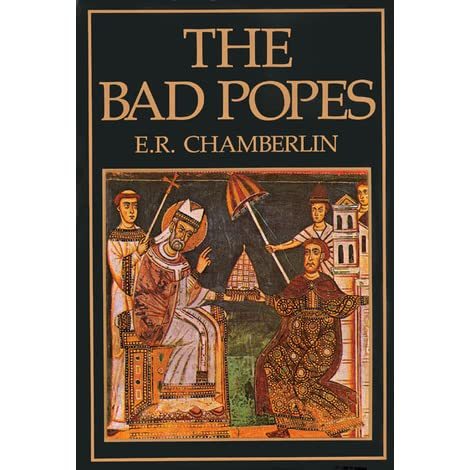
26. The Bad Popes by E. R. Chamberlain. Not going to lie, I picked this one up because it was a dollar used, and the title amused me. The book, sadly, did not. It’s a series of biographical sketches of popes who the author deems were too invested in temporal power, culminating in Pope Clement VII, who brought a sack down on Rome. The writing does not do a good job of making the case that these are the worst of the popes, especially since the bad behavior of many other popes is brought up in the text. Worse, the book is blatantly racist, indulging in ethnic stereotyping, especially of Italians and Germans. The book is something of an antique, having been written in 1969, but that isn’t an excuse, and the book is ugly and unpleasant for it. At least this book got me to listen to the Pontifacts podcast, which is a very fun way for me to get my fill of papal history.

27. The Lion in the Living Room by Abigail Tucker. This is a book about the house cat, and how it conquered the world. There are chapters on toxoplasmosis, and whether it is a major influence on human behavior (the evidence for that is weak, but it may be one of the multifactorial influences on schizophrenia); the damage done by invasive cats and how cats are evolving to deal with new island ecosystems; and a chapter on cat breeding and modern designer strains. The author has an interesting hypothesis. Namely: cats are not as successful at controlling rodent pest populations as their reputation would suggest. Instead, the reason that cats are such common pets and have been for so long is that, due to their size, vocalizations and facial features, they are sufficiently like human babies that they trigger parental instincts. So cats are accidental cuckoos. That’s a pretty cool idea.
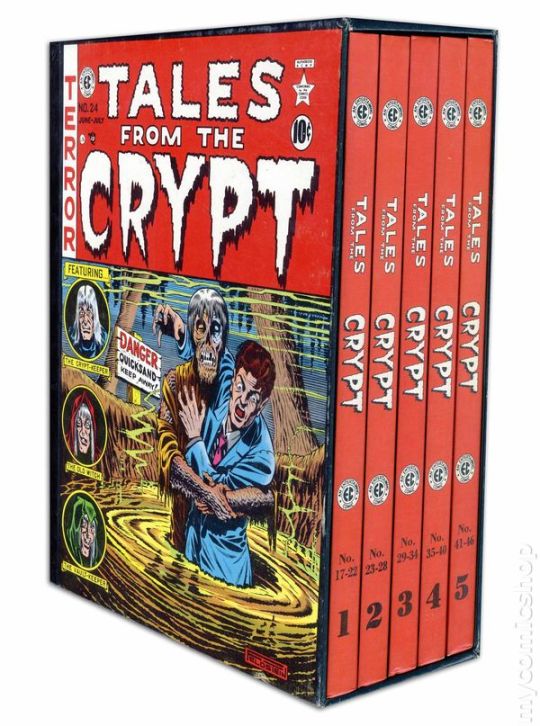
28. Tales from the Crypt, Vol 1 by William M. Gaines et al. This is the first of a five volume series, that I snapped up for 50% off at a sale just before businesses in my area closed down, and is now one of the prides of my book collection. This collects Issues 17-22 of the magazine The Crypt of Terror/Tales from the Crypt, a foundational text of American horror. Many of the stories are plagiarized from horror short stories and movies from the previous half-century—notable loose adaptations in this volume include “The Upper Berth” by F. Marion Crawford, “The Novel of the White Powder” by Arthur Machen, and the films The Man from Half-Moon Street, The Beast with Five Fingers and I Walked With a Zombie. But the plots are really just a pretext for the gorgeous, gory art by such luminaries as Johnny Craig, Al Feldstein, “Ghastly” Graham Engels and Wally Wood. What’s interesting is how fully formed as a horror icon the Crypt-Keeper and his ilk already seem in these early issues. Although, as @screamscenepodcast points out, no horror movies were made at all in 1950, and most early 50s horror movies were themed around alien invasions rather than mad scientists, vampires and werewolves, comics filled that void in the horror genre (at least for five glorious years before the government shut them down).
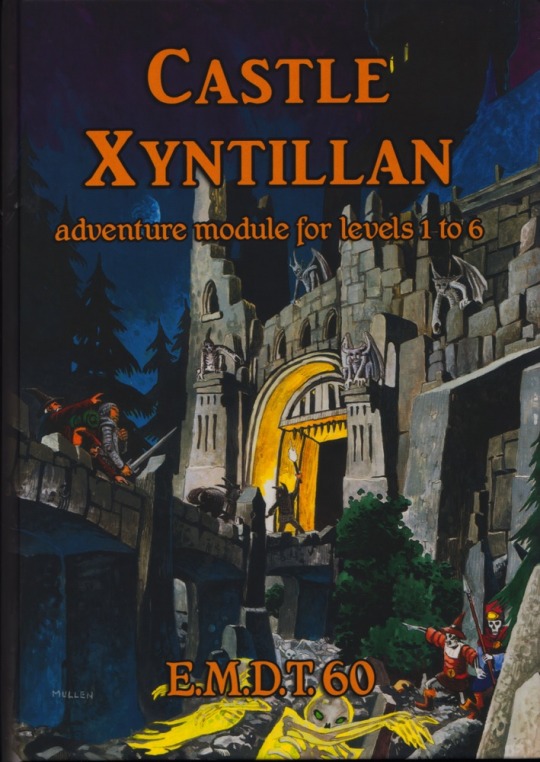
29. Castle Xyntillian by Gabor Lux. This is a module for the Swords and Wizardry RPG (one of many D&D retroclones). I found out about it through @vintagerpg, which gave it a glowing review on their tumblr. I had a lot of fun with this module. The titular castle is haunted by the mostly undead Malevol family, a group of weirdoes with conflicting agendas and more of a callous disdain for the living than blatant hostility. It looks like it would be fun to run as a straightforward hack-and-slash dungeon crawl and as something with more nuance and roleplaying potential—even rank and file undead are not inherently hostile. As to be expected from something with retro-chops, there’s a lot of high fantasy weirdness—like the “Indoorness”, a bucolic countryside in the middle of the manor, and monsters like killer pigeons and goats. It was fun to read and it looks like it would be fun to play--I’m going to convert it to Pathfinder RPG and find out!
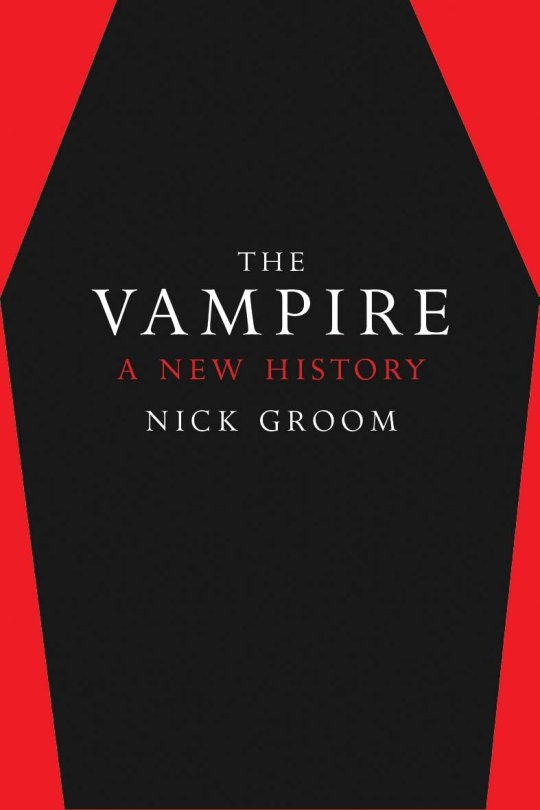
30. The Vampire by Nick Groom. This book sucks. It’s primarily an ode to wasted potential—it’s clear that the author did his research on vampires, and there are some interesting tidbits to be sifted out. The link between vampires and anti-capitalism, for example, apparently dates as far back as the word’s publication in English, and Catholic theologians grappled with how vampires could exist as supernatural and evil entities in an era that was slowly stripping the Devil of his powers. But most of the book is filled with long summaries of itself, denials of the importance of some idea to the concept of vampirism (like sex or drugs) that is immediately refuted in the text itself, and just straight up word salad nonsense. The conclusion ends with the author comparing vampires to potatoes. Seriously. Skip this one.
39 notes
·
View notes
Text
Killing Eve + making worlds and workplaces for women
killing eve very frequently – and obviously quite rightly – gets discussed as a feminist screen text, but i feel like we often talk about the individual characters, how fantastic they clearly are, and how flawed/developed/multifacted/interesting they’ve grown to be. but another thing killing eve does phenomenally well is subvert power structures and institutions, and populate them with women in a way we rarely see. for example, in season 1, eve’s MI5 office is unusually gender-balanced for television (it’s her, elena, bill and frank), and when carolyn is introduced, she’s immediately painted as almost an urban legend – elena raves about how incredible she is and how much she’d love to work with her, and we’re positioned to view her with intrigue and awe. this “mysterious, unreadable, probably damaged but definitely utterly competent and slightly amoral” character would typically go to a man – probably a slightly misogynistic one who’d gradually form a “grudging respect” for the women on his new team, as the women act as a device to coax him into the New Modern World and soothe his trauma. but carolyn gives this archetype an internal makeover and new vitality, and neatly sidesteps stereotyping: she’s not a “bitchy boss”; she never yells, or insults; she’s at times eerily calm, and methodically works her way through problems. this is especially poignant when we think of male characters who rail against female leaders for being “too emotional”, and proceed to spend half the movie throwing tamper-tantrums. at the same time, though, she doesn’t feel emotionless to prove a point, or simply to be the stoic; we get a very real sense of her pragmatism and cold war-conditioning, and the interlocking mechanisms of her many layers. carolyn’s character (both her writing and shaw’s acting) are totally genius, but the main point im trying to raise here is that the parts of Mentor and Career Aspiration are inhabited by a woman, and 60yo woman going full-speed at that – not someone who’s barely 39 but treated as basically a retiree.

next, we’ve got carolyn’s boss, played by zoe wanamaker in 2x04. yes, she’s not in the show for long – although she may make a reappearance? not sure – but her value is more symbolic than anything. in her scene, we get the impression of her power (she gets to make carolyn wait :o), and while she’s also a severe older woman, she’s very much distinct from carolyn in personality, which is pretty unique; often, writers will prescribe bulk-identities to all their minor characters who fall into certain groups, out of a mix of laziness and ignorance. anyway, wanamaker’s helen is shown eating (another rant-worthy point is how the frequency and ease with which killing eve’s women are portrayed as actually eating food is tragically radical), and she lashes out at carolyn before soothing herself easily once again – she’s capricious and less reserved and measured than carolyn, but equally potent. we also get a strong vibe of a long and complex working relationship between these two, effortlessly implied by the writing and performance and even if we never double-back to it, it colours how we view carolyn and the system that i’ll (eventually) get around to making my argument about.

lastly, there’s julie, who plays the medical examiner in 2x01, and conducts the exhumation autopsy on allistair peel. she comes across as professional, capable, no-nonsense, but also warm and gallows-funny, hugging carolyn and sympathetic to eve’s slightly strange reaction to the corpse. like helen, she’s not in the show long, but it’s more her relevance as a symbol i want to discuss.
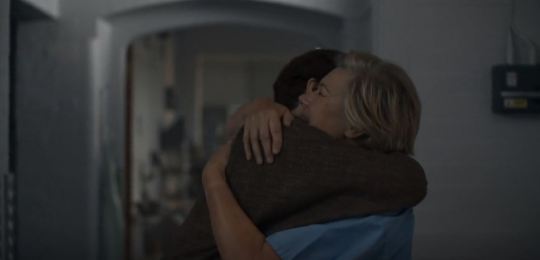
so what am i getting to by going on about carolyn and these relatively minor characters? well, i want to talk about how killing eve establishes for itself something of an ‘old girls’ club’. an ‘old boys’ club’ is the network of connections that form between (generally upperclass) men who went to the same schools or worked in the same companies, who get each other opportunities in a pay-it-forward kind of way throughout life; it’s one of the many ways that sites of privilege are maintained as sites of privilege. but with these older female characters, who all know and support each other, give each other second chances or off-the-books help, killing eve constructs its own version. through these interactions, we have the sense that carolyn is a part of a group of women across the government who ensure certain things happen at certain times for certain people.
even outside this senior boss ladies network, we have elena, eve and jess, who support and challenge and contradict each other – all successful women with different skillsets, trajectories, relationships, etc., and none of whom are white. not only does this show pass the bechdel test in under three minutes, but that conversation is between two women of colour. one of the many things i love about killing eve is that while it acknowledges (and even leverages) the disadvantages that marginalised groups face – e.g. villanelle is able to exploit conforming to the western ideals of femininity to lure men into a false sense of security; the ghost is able to pass through places unnoticed, etc. – it never makes that the core of the narrative. it isn’t focused on reinforcing these systemic barriers over and over, which is something a lot of shows do when they’re trying to be progressive, and all they end up doing is reminding us of the setbacks we face and how it’ll be a long, arduous struggle to improve things. instead, killing eve gives a nod to this sexist, racist, homophobic reality, but sidelines it, the way minorities are so often sidelined. rather than make all eve’s bosses and colleagues men “for the realism”, it throws a few male characters in there and then focuses on the women (look how much screentime kenny and hugo get compared to jess, another first-tier secondary character). it reimagines the chain of command as belonging to women, it takes power and allocates it how it sees fit. i adore this, because if someone said to the writers, “umm… i feel like there should be more men in charge… that’s just how it is…”, their response would probably be, “so what?” it wants to spend time with complex women in complex situations, so it just puts them there; there’s no spinning of the wheels to justify how so many women got to these high-ranking jobs in an institution designed to keep them in the lobby. it certainly never pretends women don’t have to cater to men and their sensibilities (take carolyn comforting frank in season 1), but it doesn’t get caught in ‘liberal’-dude-writer “look at these (skinny/pretty/fantasy-fulfillment) women push through the system and affect change from behind the scenes by showing their cleavage to *trick* men into doing what they want ;) girlpower, ladies”. it lets women BE the scene, unapologetically, without feeling pressed to explain or defend or negotiate by stuffing an equal number of male characters in. we get konstantin and aaron peel and various ambassadors or clerks who are men, but these are all characters on the outside looking in. killing eve isn’t arranging women as spaced out and in competition with each other; aside from villanelle, they’re all on the same side (and villanelle’s temporarily teamed up with them anyway), and they work together, while still being allowed internal tensions and clear relationships. i originally just intended to talk about how killing eve built us an old girls’ club, but i had More Thoughts, so that’s why this essay doesn’t stay totally on-thesis from here on, even though it is all about women and their positions in the narrative/workplace. another note – these women, for the most part, aren’t there to be love interests. we obviously have eve/villanelle, but they both have their own fully-developed characters, plus, their love interests are each other, not men. we have carolyn, but her affairs don’t control her storyline; they flit in and out, and are of far more signifiance to the men than to her – she’s an older woman who controls her sexuality, but doesn’t have any interest in letting it overtake her work (and we don’t have that ridiculous “uptight bitch learns to put relationship with basic bro above her lifelong career dream”). we have gemma, but while her narrative function is to give niko a final straw to leave, and to push eve further, she has agency in her arc; SHE is the one who pursues niko, and she does this in a respectable and understandable way. she’s not the “sexy temptress” who “lures” him away, and nor is she an “innocent” that he actively chases.
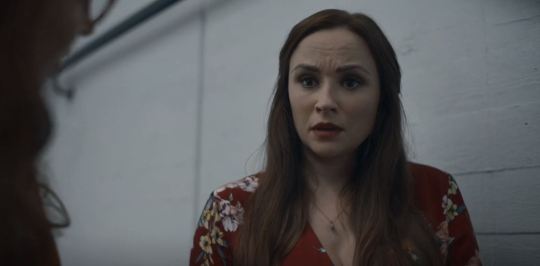
also, NONE of the women have their qualifications questioned. there is no “is carolyn experienced enough to have so much free reign?”, no “how did eve get to MI5?”. the way we’re always told to with male characters, the show expects us to accept that they’re fit for their roles. this is highlighted when eve kind of stumbles into being an authority on female assassins. she doesn’t have a phd in psych or anything, but she clearly has an affinity in her area, and she VERY quickly learns to own that. the first time carolyn calls her their resident expert, eve is a bit surprised, but then she’s just like, “huh, guess i am”, and runs with that confidence. these women are all tough, but they don’t have to dig out their own spaces. theyve got them, and the audience isn’t gently directed into wondering whether they actually should. we KNOW they should. unsurprisingly, considering much of killing eve is written/overseen by women, but this isn’t done for Woke Points. there’s no constant self-conscious grandstanding about how many women are in the series. the actors and writers talk about it in press, because theyre EXCITED, theyre THRILLED to finally have this, but that comes from a genuine place of joy to be involved in such a project, rather than a hapless grab for viewers. the female characters aren’t half-baked stocking-stuffers to net the 18-35W. theyre Actual Characters. bottom line is, isn’t it so nice? isn’t it so lovely to be watching something, and have women be in the foreground AND the background? to not have to smurfette effect, the “one of the main characters is a girl, can’t you just shut up now? smh so greedy”? to have minor female characters not as sexy set-dressing or rivals or “ew she’s ugly here’s what we don’t want our protagonist to be hahah amirite lads”? we get to see ourselves over and over, in so many different iterations. killing eve’s women aren’t just “empowered”, they HAVE POWER. they are in positions where they can use that power for good or bad or both, but they have sway and influence and we don’t have to watch a 22yo ingenue assimilate to a 98% male workplace. female characters in killing eve are REAL and PRESENT and we have an entire textured world that isn’t just modern, it’s extra-modern. we have our cake and eat it too: there are women throughout the workplace hierarchy but we still get a critique of how men manipulate the game, and both are managed expertly to ensure we get the social commentary AND get to enjoy the experience of watching women be intelligent and morally grey and sophisticated and manipulative and and AND. in conclusion, i will no longer be accepting applications from media that doesn’t have women in their cast because it “isnt realistic”. killing eve is tearing it up out there, and it’s almost overwhelmingly relieving to get to experience media like this.
*btw, im not trying to imply there are no women actually working at MI5. im sure there are many, but this is more a commentary on media interpretations (james bond, etc.), and the male dominated government landscape in general.
#killing eve#ke#killing eve s2#killing eve season 2#villainever#mine#villainever writes#villanelle#eve polastri#carolyn martens#ke analysis#villaneve#villanevest writes
398 notes
·
View notes